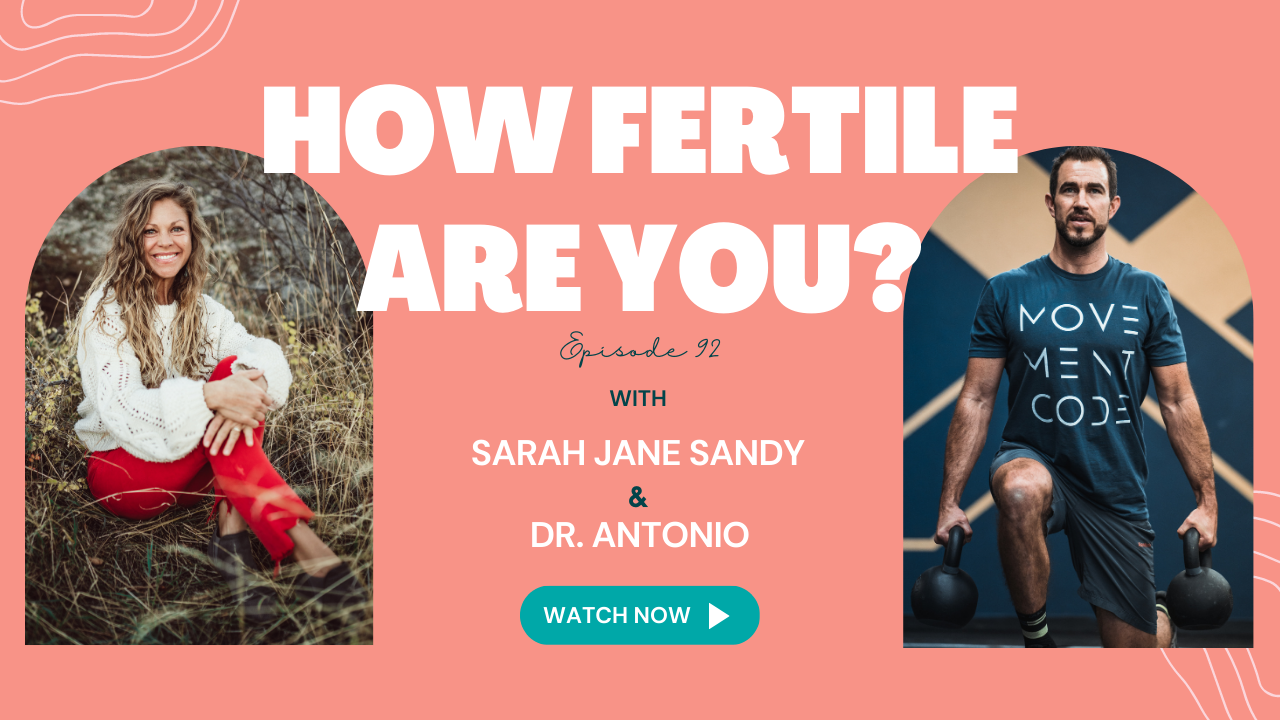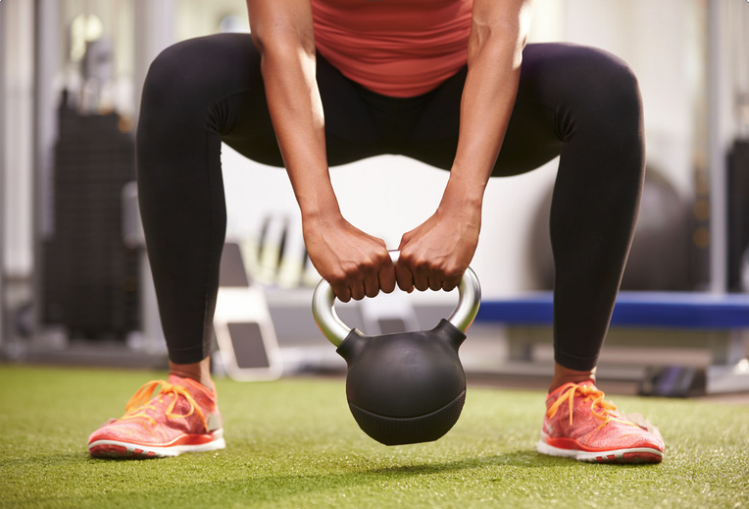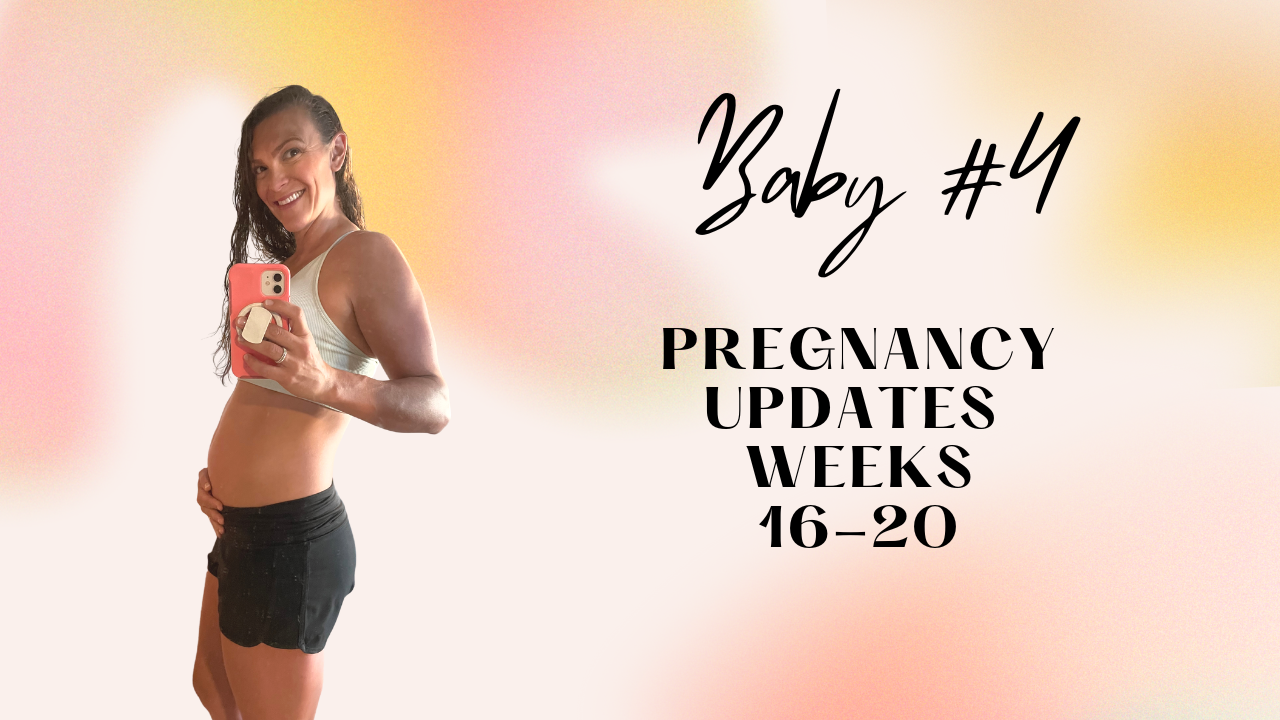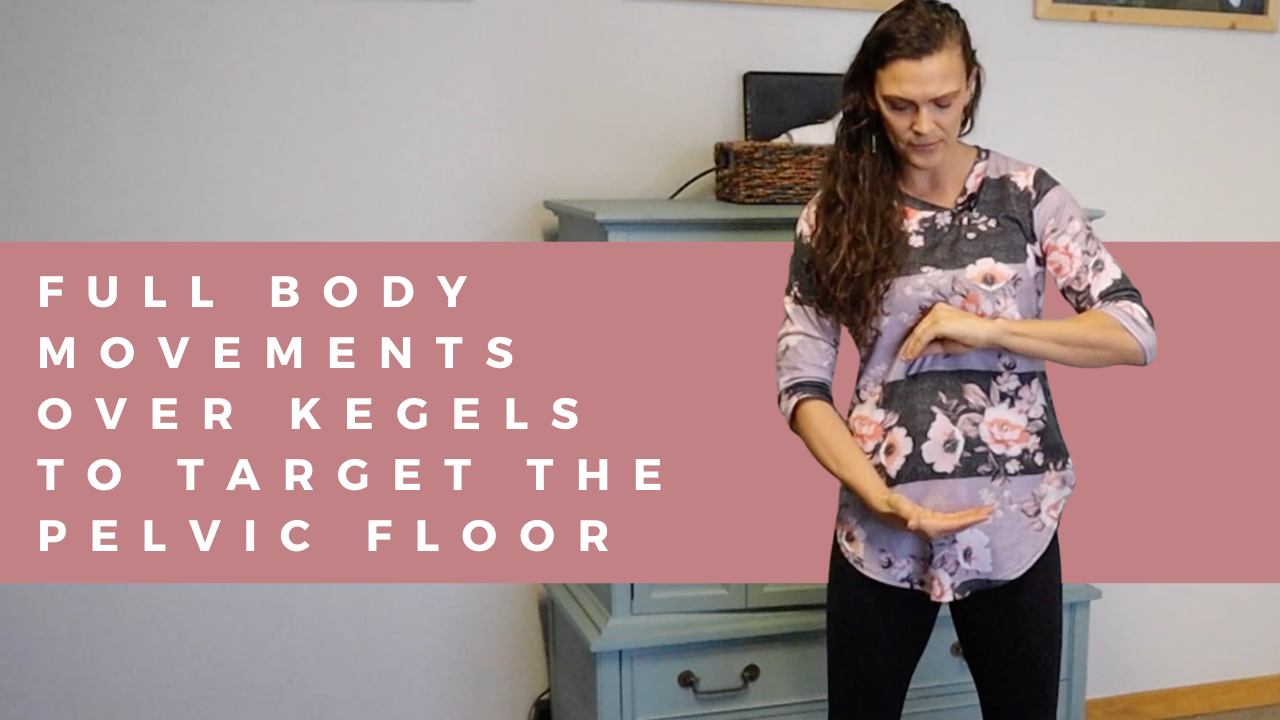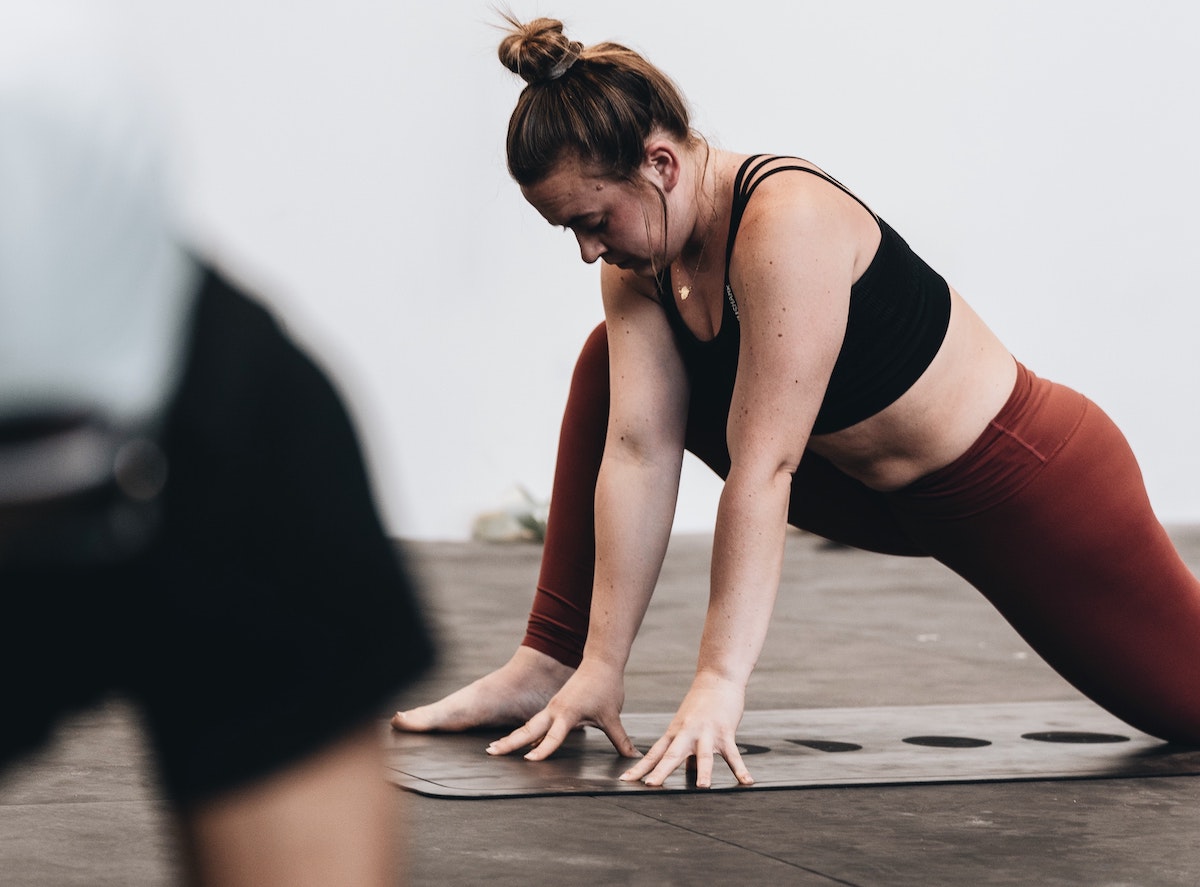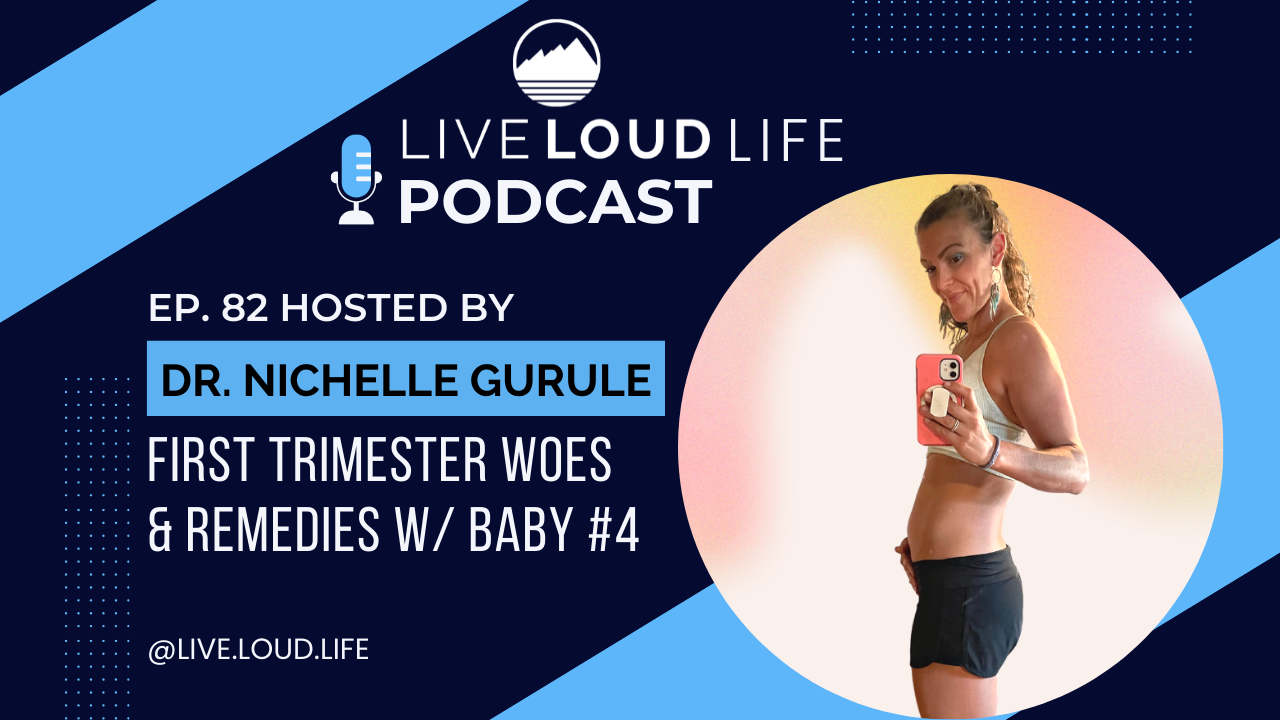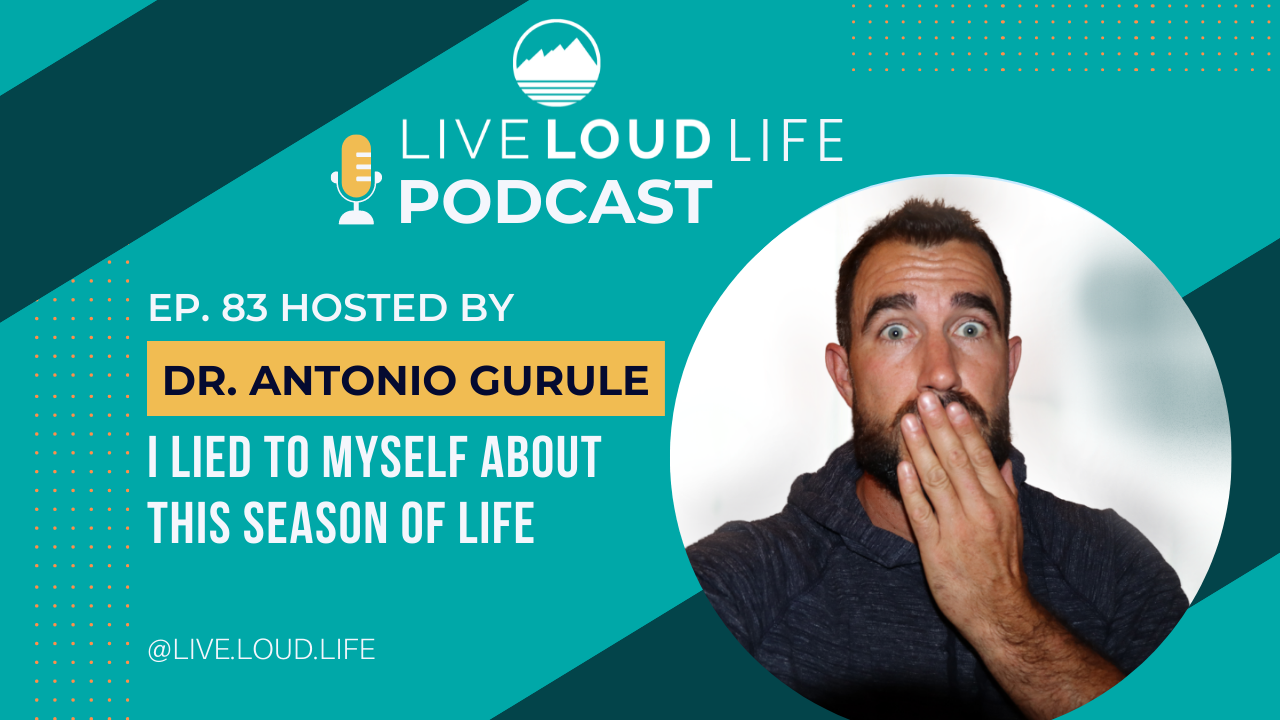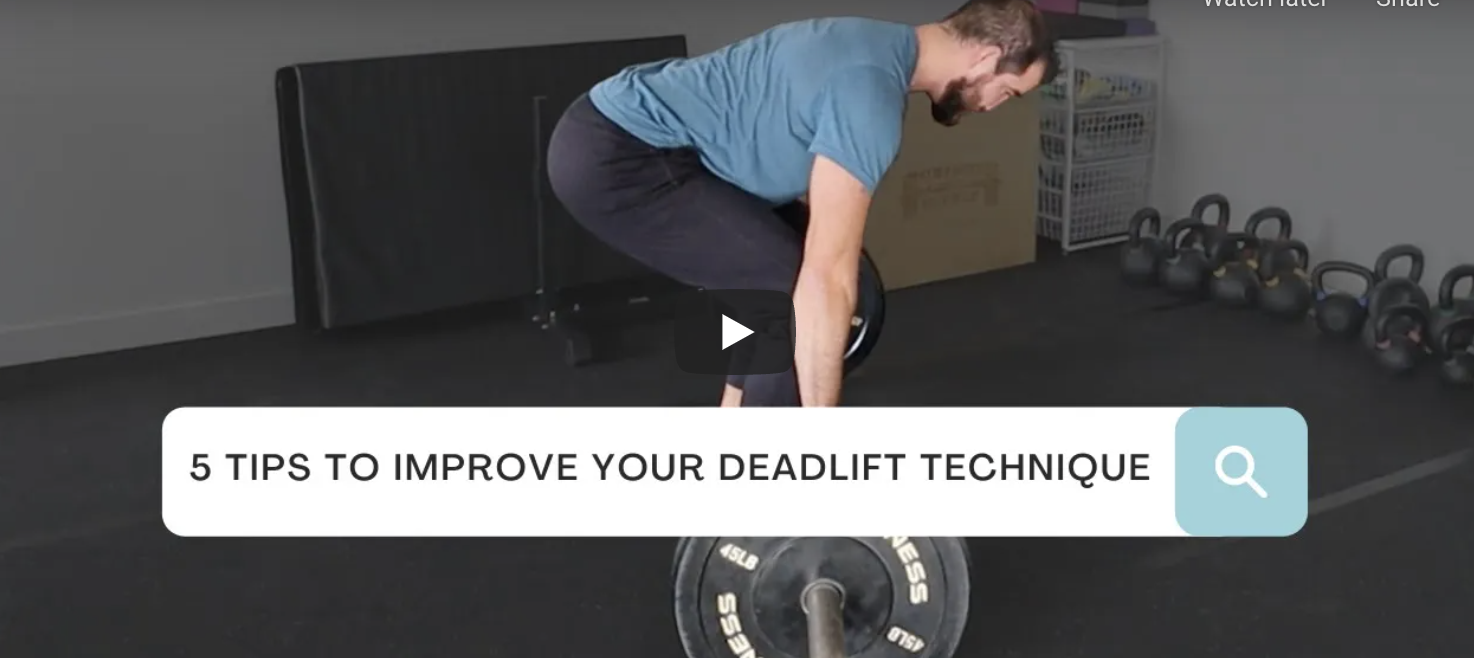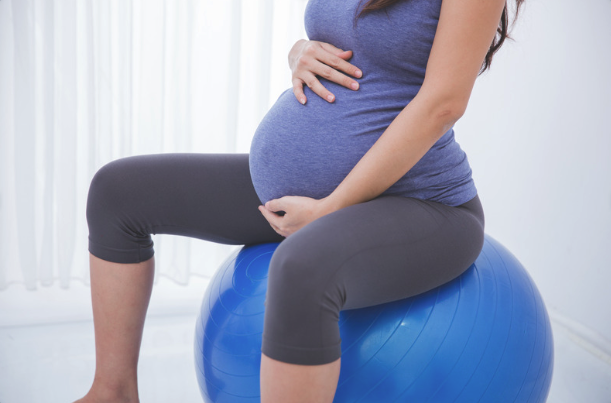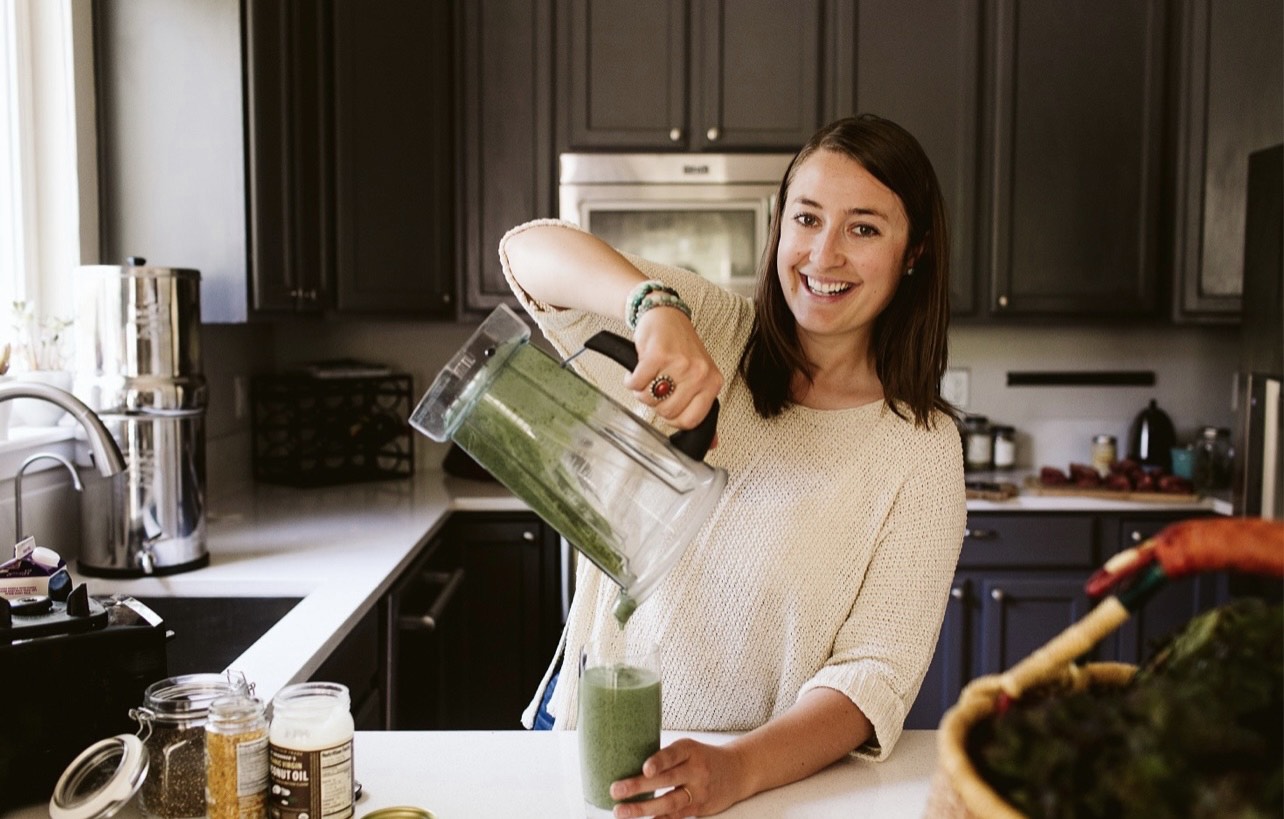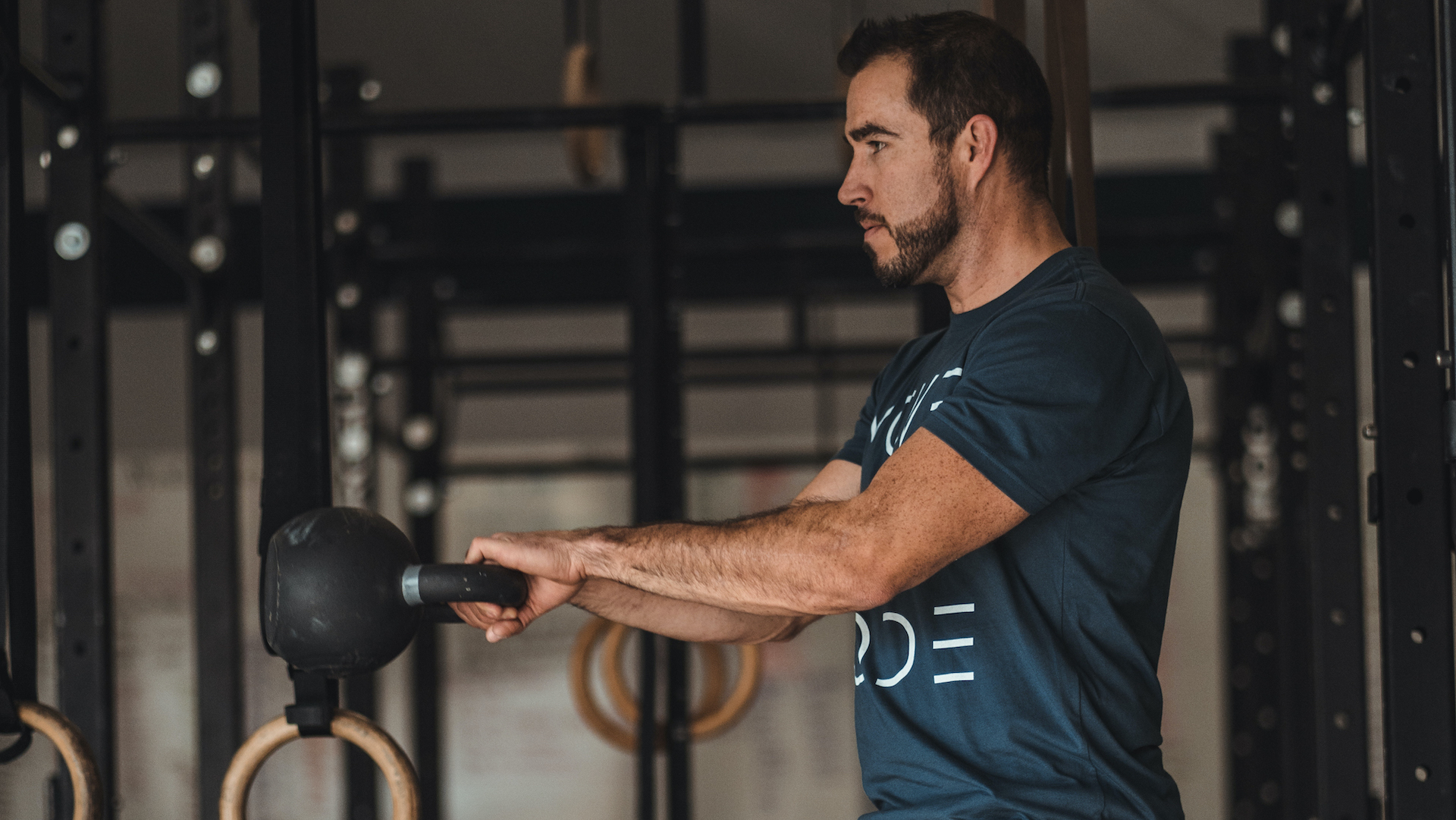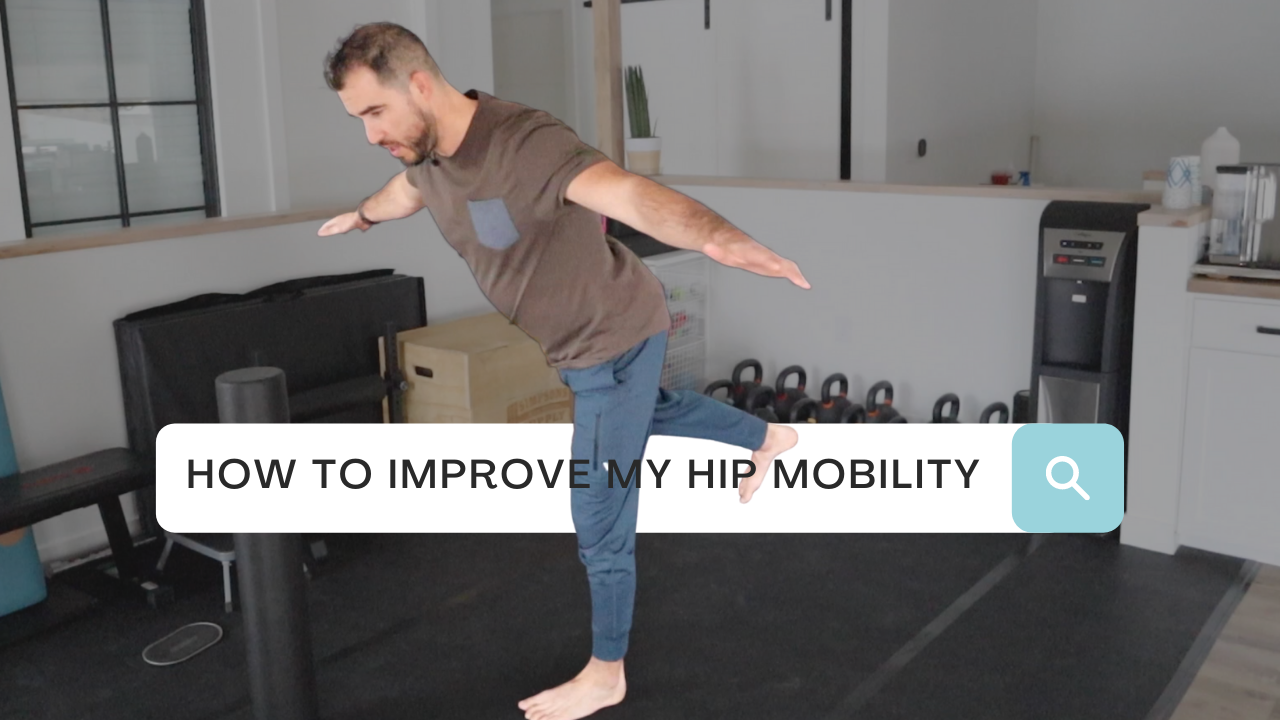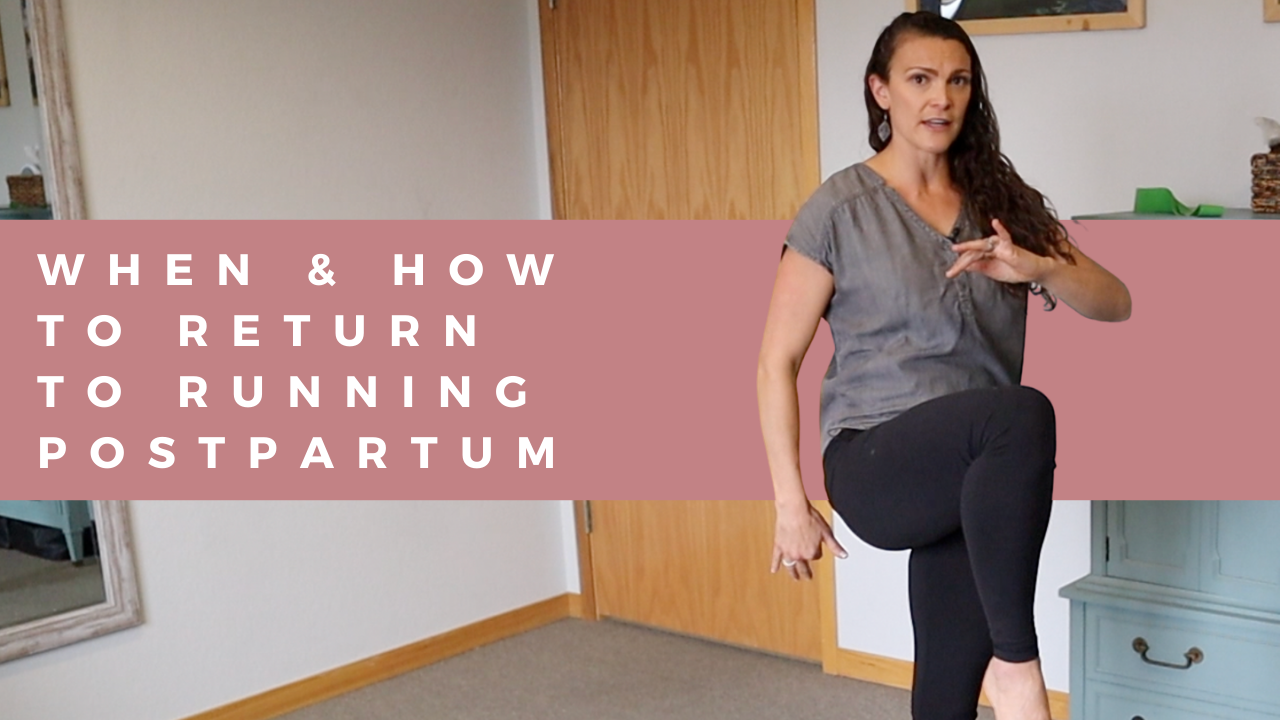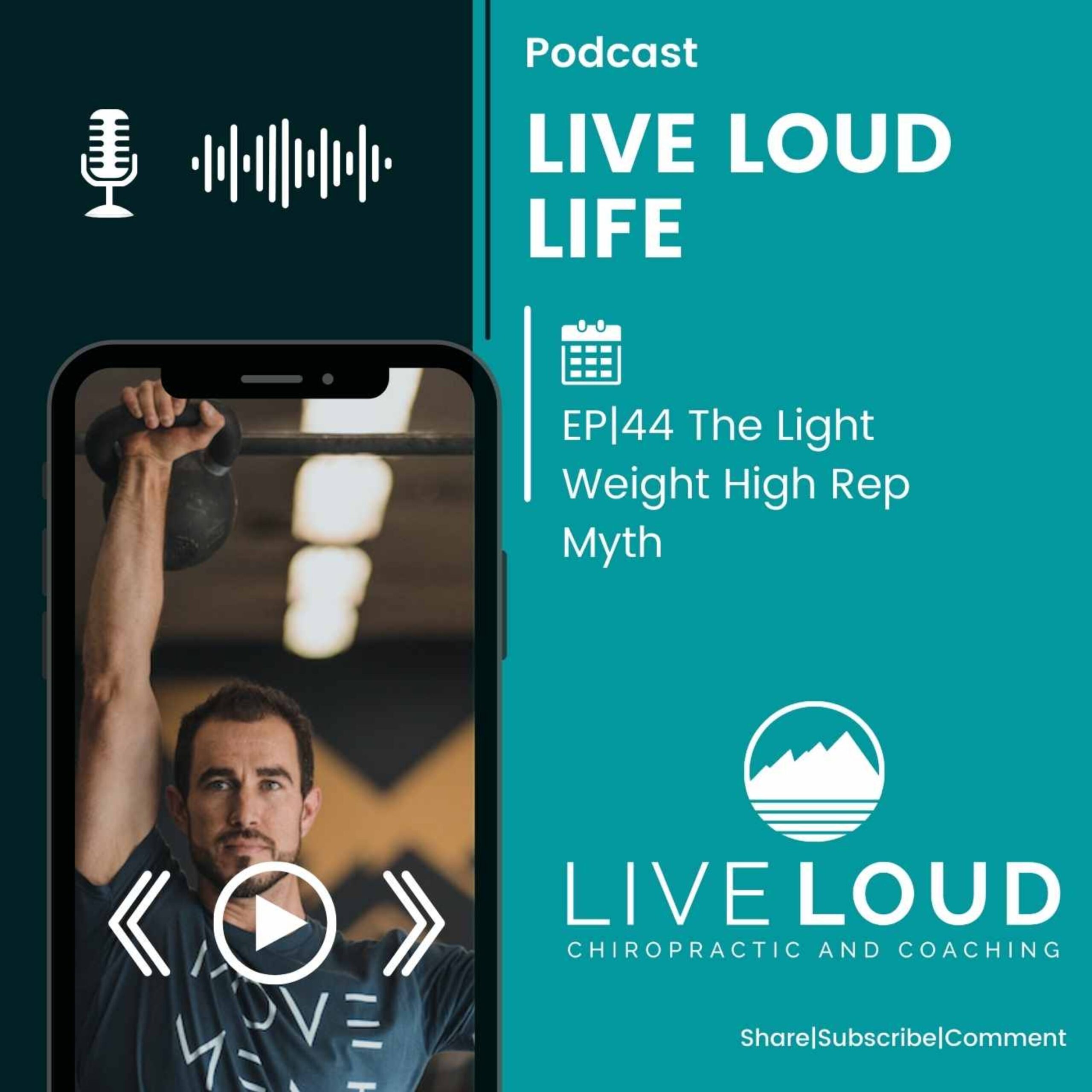Prenatal & Postpartum
How Fertile are You? | EP 92
Live LOUD Life Podcast
Lafayette Colorado
Episode 92
How Fertile are You?
With Sarah Jane Sandy and Dr. Antonio Gurule
EPISODE HIGHLIGHTS:
[6:04] fertility is 1/3 male, 1/3 female, 1/2 we don’t know
[6:32] women are more likely to take charge and find out solutions than males
[7:06] Sperm count on a 60% decline since the 1960s
[8:14] Males need a sperm analysis, blood analysis, and hormone analysis.
[9:49] What are some of the lifestyle things that you’re seeing that may be attributing to the 60% decline of sperm count and males and or just things that we’re seeing now? **Our toxic and chemical exposure has been increasing and continuing to increase
[10:49] We can only change what we have control over **food, water, air (what goes in your body)
[12:22] Hormone imbalances: We do not live they way our bodies are intended to live by
[15:07] Nutrition advice **If consuming animal products, you want to source the highest quality you can find and afford **animals store toxins as well in fat tissue (just like humans) **Avoid Dirty Dozen **Look into the Clean 15
[17:20] Think about your grandparents; would they recognize what you are eating?
[18:15] KISS (keep it simple)
[19:01] Protein needs to be massively increased during pregnancy **Soils have been losing their nutritional value and are not rich in nutrients anymore
[20:34] Top 4 supplements for most people (omega-3, Vit D, Mg+, Probiotic)
[23:01] Weight Loss is in the kitchen
[25:33] Changes take time **think about how long it took your body to get here, it wont take the same amount of time, but it does take time for your body to adjust and makes changes
[26:16] Life Cycle of egg and sperm are about 90- days
[27:20] Stress is a major factor for infertility in both men and women **cortisol steals nutrients for healthy fertility, lowers progesterone and testosterone
[31:28] Best ways to manage stress **Meditation (stress negotiation) **Pleasure (Get lost) **Nature (reconnect)
[34 :43] Steps to connect
**Newsletter
**blog
*fertility code
**daily fertility check list
CONNECT WITH SARAH:
https://www.instagram.com/sarahjanesandy/
https://www.thefertilitycode.com/
https://www.facebook.com/SarahJaneSandyCNT
Connect With Antonio and the Live LOUD team:
hello@liveloudlife.com
Subscribe to my YouTube channel here: https://www.youtube.com/c/LiveLoud
Visit the website: https://www.lifeloudlife.com
Like the Facebook page: https://www.facebook.com/liveloudchiropractic/
Follow on Instagram: https://www.instagram.com/live.loud.life/
Guiding you to the adventurous life you were made for! . If you dig this give it a like ❤️, if you’re loving it let me hear you with a comment 🗣👂, and if you know it will help someone or anyone out please share 👥📲 Live Loud Chiropractic and Coaching Top Chiropractor and Physical Therapy in Lafayette Colorado Serving Boulder County Boulder, Longmont, Louisville, Erie, Broomfield, and Arvada Colorado
About Sarah Jane Sandy

Background:
- Certified Nutrition Therapist
- Fertility & Women’s Health Expert
About Dr. Antonio
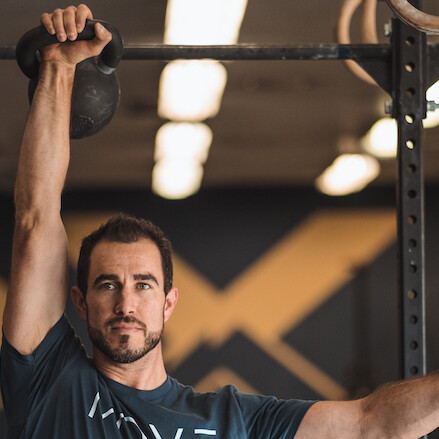
Background:
- Father
- Doctor of Chiropractic
- Owner of Live LOUD
- Personal Trainer & Health Coach
Check Out Some of Our Other Blog Posts and Podcast Episodes
Anthony Gurule 00:00
Hey what’s up guys, welcome back to another episode of the Live LOUD Life podcast. My name is Dr. Antonio, I’m your host of the Live LOUD Life podcast. My wife and I, we co-own Live LOUD Chiropractic and Coaching here in Lafayette, Colorado. We are just outside of Boulder, Colorado in Boulder County. And our mission is to help families. We want to help make families stronger, so that we can build a stronger community. We want to help guide you to the adventurous life that you and your family were meant for. And we do this through chiropractic and coaching. chiropractic, obviously being more of a hands on approach, more of a clinical conversation, clinical diagnostics, but the coaching aspect is really what we believe is, you know, the foundation of what our system methodology, whatever you want to call it is, because a lot of this comes around through just coaching suggestions and recommendations. also, you know, obviously within that comes into clinical prescriptions of certain things to eat or supplements, so on and so forth. But it’s coaching a lifestyle, it’s coaching, it’s coaching a philosophy and a foundation about how to live an active healthy life as an individual, and setting an example of a healthy active life for your family, for your immediate family, for your friends, and more importantly for your community. So stronger families to make a stronger community as a whole would be a win win, right? And that’s what we want to be able to do. we want to be able to help fill in the gaps in the holes that you’re maybe not getting from, from other roles and conditions.
Anthony Gurule 01:43
And today that’s in particular where we’re going to talk about. it’s going to be a little bit more of a shorter episode because this is more of a quote unquote, you know, just discussion around how to lay out a framework and a better understanding of how to work out or what exercises are safe or maybe not safe during pregnancy. This is a very, very common question that we get.
Anthony Gurule 02:12
My wife Nichelle has created a mini course that has some workout ideas, recommendations, and prescriptions than laid out into a workout. She guides and educates other clinicians on how to broach this topic as a chiropractor, how to better serve prenatal patients through chiropractic care, but also exercise recommendations and prescriptions, having recommendations with other personal trainers within the community whether that’s CrossFit whether that’s Orange Theory, chatting with coaches and owners and saying hey, if you have prenatal patients and they’re having these types of symptoms, or this has happened, here’s some better recommendations, not modifications. We call them lateralizations–you’re just you know, you’re doing something something different or something else we you know, we borrow that term from Charlie Weingroff, who’s a physical therapist and strength conditioning coach. But it also and also doulas, right, doulas and midwives and OBs who are directly involved with the prenatal process from nearly conception all the way through, having this conversation. we know that exercise is important during pregnancy,
Anthony Gurule 03:19
There are so many different studies that talk about the benefits of exercising during pregnancy, not only for the mom, but also for baby, which is quite interesting. They’re seeing increased cognitive-what’s the word I’m looking for? Excuse me, their cognitive output as a as an as a child through as they age is actually better from moms that actually worked out during pregnancy.
Anthony Gurule 03:50
Now this is tough, right? How do you define working out or exercise? it’s different for everybody. But we want to, and we encourage that, and yet we’re sympathetic to the different stages of life, aches and pains, so on and so forth, which obviously would limit what you can do from an exercise perspective. So you know, it’s a bit of a gray area on determining what is working out? what is exercise? What are the physical guidelines or recommendations for pregnancy? And without getting into the like, nitty gritty detail of every single thing. And obviously, every potential situation, if you had this versus this, what could happen? we’re not gonna be able to do that. What we just want to lay out is what is what are we trying to accomplish here, and we want to encourage you to stay as physically active as possible.
Anthony Gurule 04:41
And one of the things that constantly comes up is, well, should you add something in that you have not already been doing? Let’s say for instance, someone just through the stages of life with work and kids or whatever that is, they were not able to work out as much before they got pregnant, but now that they’re pregnant, whether they have more time or they understand the importance of exercises during pregnancy, well, would we say, “Well, you haven’t been exercising, so you shouldn’t do too much.” No, that doesn’t, that doesn’t really make sense. Now, we would encourage not to do too much, there’s obviously, you know, a too far swinging the pendulum of the other way. But we wouldn’t say “no, don’t exercise because you weren’t doing something before,” we just have to find those first few stepping stones to help them start to gain some momentum. and help hold their hand, if you will, So that their technique and they feel confident about lifting, or how far they’re walking or whatever that is. And that’s an important topic, because a lot of times people want to add things in, but they weren’t quite ready or weren’t doing them before. And they then assume that they’re not able to do them at all. So you do have to take that in consideration, there is a ton that you can do, and that you can still add, even though you weren’t doing them prior to pregnancy.
Anthony Gurule 05:54
Now on the big questions is, is it safe? you know, outside to contact sports, or different things like that the majority of what you’re going to do is safe for pregnancy, right? Rock climbing, we have pregnant patients that have been rock climbing before, obviously, there’s a certain inherent risk with certain sports or activities. You know, you could fall off riding your bike, you could fall over running, right, so we’re not encouraging any of these by any means. We’re just kind of, you know, setting some suggestions, if you will. And you have to take into consideration.
Anthony Gurule 06:31
Now, there are certain things to consider when you’re talking about like weightlifting, and how heavy and the intensity that you’re doing. And if you’re doing Valsalva movements, which is essentially holding your breath to maintain a more rigid or stiff torso, as you’re seeing changes in blood volume and blood pressure, you know, you do have to take that in consideration. And that is again, of course a conversation with your provider that is managing your, your pregnancy, but we recommend Mama’s weight lift, or do resistance training. During pregnancy, again, we talked about about load management and the intensity and things like that, but you can still lift and do fairly intense things. And it’s a fairly as a you know, as a scale and a wide range during pregnancy and see a ton of benefit from that. Now, are we trying to hit one rep maxes and PRs during pregnancy, I mean, some would argue yes, but I would argue, why, that’s not really an accurate representation of what your strength is anyways. So you know, you do have to to kind of keep manipulating the numbers and the weights and the intensity and the sets and reps in order to do it. But weightlifting and resistance training is safe, and it is effective. Now, outside of that, there’s not a lot of unsafe things to do, again, outside of contact sports, or things that would elicit, you know, potential trauma to you or baby based on impact we’ve had, again, not our recommendations, but some have tried very just easy scheme, because they’re in the winter months, and they wanted to and they felt very confident about not falling. So you know, you have those types of things.
Anthony Gurule 08:16
Overall, again, we’re talking about movement. You need to move, and it’s good to get your heart rate up. And it’s good to breathe hard. So that doesn’t mean just because you’re pregnant, you can’t do HIIT training or circuit training or CrossFit or Orange Theory. But you do have to listen to your body and understand certain signs that would indicate that things might be too much, right? Now those are going to be different for everyone, but a lot of this comes down to you know, lightheadedness, you know, breathing too hard. Certain aches and pains within lower extremity, chest, abdomen, so on and so forth would be obviously like your more extreme ones. If you’re becoming pale or anything like that, I mean, again, these are the same criteria, though, that would be if someone else was working out or training too hard. So it’s realistically the same thing. It’s just that your threshold level for all those most likely have gone down. And depending on what type of an athlete you were before, you’re going to be maybe a little frustrated that you’re not able to do the things you were able to do previously, which makes sense. But if you’re someone who wasn’t exercising before, you’re probably going to be a little bit more hyper aware of that, of just feeling that shortness of breath or that uneasiness. So again, we’re not saying you have to push through that because we’re not trying to set yourself up for a strength and conditioning program to increase your metabolic capacity to increase your strength and conditioning during pregnancy. We’re trying to help you maintain a healthy active pregnancy.
Anthony Gurule 09:54
Now, walking. walking is great. but in general, we encourage you to do something above and beyond walking. Obviously, again, certain things would dictate that you would not be able to do so. And this is again, any exercise. Any exercise that you do during pregnancy needs to be consulted with and work through and have a conversation with the primary physician who is managing your pregnancy, whether that’s your nurse practitioner, your midwife or your OB or obstetrician, right. But we would encourage more than just walking. walking is fantastic, but that’s kind of like your baseline minimum, right? Just like our activities, or recommendation activity guidelines. We want a few days a week of where we’re kind of just doing this steady state getting our steps in, you know, kind of pushing ourselves, we’re huffing and puffing, but still just kind of at that conversational level, but you’re not really getting a lot of benefits outside of that.
Anthony Gurule 10:55
So if you’re just walking, high five. kudos. can you do something more? Can you do some bodyweight squats? Can you do some bodyweight, you know, good mornings? can you do some walking lunges? do you have a suspension training, we’re able to do some bodyweight rows? Do you have some bands that you can do some rows with? You know, there’s a lot that you can do that allows you to get a little bit more out of that. Now, again, this all comes back down to preferences of exercises that you like to do, because that’s gonna allow you to maintain the most consistency, but then also the intensity that you like to do. And we do encourage having an open mind and at least being willing to try some high intensity things that allow you to still get your heart rate up a little bit. And it’s okay to lift more than five or 10 pounds. And not saying that that is a bad thing. There’s programs out there where it’s all directed around that where it’s lighter weight, high rep, but I just don’t want individuals and mamas to feel like they’re not able to do more and or being ashamed because other people are just saying they should back off because they’re pregnant. “why would you need a lift that much?” It fits within your strength, and your comfort, and your wheelhouse, that is totally fine.
Anthony Gurule 12:05
Again, you if you’ve been doing that enough, you understand the risk reward ratio and having a conversation with your practitioner has driven us to kind of help navigate and guide as you start to get further through pregnancies, what things maybe we need to change or manipulate. But that’s totally fine. Now outside of that, the question around safe also comes up around core exercises. diastasis recti, pelvic floor strength, so on and so forth, we want to enhance the capability of understanding how to control tension within your abdominal wall and your pelvic floor through pregnancy, because the pressure is increasing due to baby taking up more space. But we’re not we’re not necessarily we’re not gaining more strength, right.
Anthony Gurule 12:45
And so what a lot of people assume it’s when we’ve seen this, is “I don’t want diastasis. So I’m doing more core work to prevent diastasis from happening.” diastasis recti will happen in 100% of moms, it’s estimated at the week 35 Everyone will have some form of it. Now it is technically not a quote unquote diagnosis, though, until 12 weeks postpartum, because it is a normal thing that everyone will get. So you can’t diagnose someone with something that everyone will get–doesn’t make sense, right? So after that, though, if you still have weakness or spacing issues, then we can have a you know, a stronger conversation about putting a diagnosis on that.
Anthony Gurule 13:26
But what we’re trying to enhance and help is what exercises are quote unquote, not safe versus unsafe, but adding too much pressure or tension into the abdominal wall or the pelvic floor and creating more laxity. again, as that pressure for as baby’s growing starts to put more pressure on the pelvic floor and the abdominal wall. If you’re doing more things that increases the pressure within the within the abdominal cavity that’s going to push on that separation even more and/or push on that pelvic floor even more, creating potential incontinence or prolapse issues and/or more bulging and doming within the abdominal wall stretching out that separation or that gap even further, potentially making the recovery process more challenging or slightly longer. I’m not saying that it will but potentially, so we do have to take that in consideration. So we go through activation exercise of the pelvic floor, of the abdominal wall so that you better understand how to control those pressure increases while you’re lifting or exercising so that you simply can stay at a management level.
Anthony Gurule 14:28
And that in turn, helps you get through pregnancy of understanding how to lift up your older kiddo, having to lift up dog food or anything like that. It’s just managing and controlling pressure. So there’s really not anything that I would say that safe or unsafe. Now, things that we would advise against for core exercises is sit ups or crunches. You know a lot of those things that create like hanging knee raises and different things like that during pregnancy. A lot of those things that create a lot of intra abdominal pressure and tension. and especially during a flex position, that tends to put a lot more pressure on the abdominal wall, the separation where diastasis will occur as well as the pelvic floor.
Anthony Gurule 15:09
So, you know, while we never say never, there’s definitely a category of things that we definitely urge against because the risk/reward benefit and again, risk not being “injured,” But risk of potentially putting more pressure and making the recovery process on the other side harder, is not is not something that we find to be as advantageous. But you can still get the benefits of quote unquote, core exercises through full body movements such as goblet squats, such as deadlifts, you know, depending on the phase that you’re in, push ups, which are, you know, a dynamic plank. or being able to do a TRX row, which is a reverse plank as you’re just lifting yourself up. three point rows where you’re on, you know, two hands or doing like a row on a bench, where you’re in a tabletop position that’s adding anti rotation exercises. So there’s a ton that you can do that still highlights and isolates, the core isolates, sorry. that highlights and will emphasize core activation, but through a full body compound movement. And what’s great about that is during pregnancy, depending on your energy levels, it’s hard to do all the little isolated accessory and all these separate exercises as it is. So it’s kind of nice being able to combine everything, so you get more bang for your buck, especially if you’re a parent and you’re on and you’re on baby number two or three, right?
Anthony Gurule 16:31
So what exercises are safe for pregnant women to do? All are. reduce or eliminate for sure contact activities, different things like that. the increased risk activities of you know, trauma and things like that. Outside of that you’re managing pressure, I would definitely encourage reducing anything that’s heavy lifting, that’s, that’s requiring you to do Valsalva moves, you’re having to hold your breath for an extended period of time. that changes blood pressure, so on and so forth. But outside of that, Pregnancy is a completely safe time to do all exercises. we definitely as we highlighted, urge and encourage, you know, certain things over other ones just for you know, added bang for your buck or full body movements, so on and so forth. And that, but outside of that you are free to do what you want.
Anthony Gurule 17:19
If you want guidance, though, you know, there are there are trainers out there that work specifically with prenatal patients. we would love to be able to have that conversation with you if that’s something you want to bounce back or navigate. Because we do want to encourage as much as we can. A very, very active pregnancy through exercise working out or however you want to describe that. So if you found this beneficial, please like share, subscribe. if you’re pregnant, I hope you can utilize this and take some of the information for you and yourself. If you have anyone else you know… a relative a family member, a friend who is pregnant and they’re unsure they’ve been you know asking this question what things I don’t know what things I can do. I don’t know if it’s safe for baby share this video with them. We’d love to be able to provide a better frame of reference and or context to be able to ask better questions so that they can find the workout program or the movements that work best for them during their pregnancy. Until next time guys live loud .if you’re currently pregnant, Congratulations, and we look forward to helping and serving in the future.
–
Pregnancy Vlog: Weeks 16-20 | EP 84
Live LOUD Life Podcast
Lafayette Colorado
Episode 84
EP 84 | Pregnancy Vlog: Weeks 16-20
With Dr. Nichelle Gurule
EPISODE HIGHLIGHTS:
[0:09] Decision to do a birth center again.
[2:06] My Birth Center is closing down.
[4:10] How do you decide where you want to deliver?
[7:25] The importance of finding the right provider for you.
[10:30] Meditation at night is a really beautiful ritual.
[13:02] Mentally preparing your brain and your body.
[16:09] The anatomy nerd in me loves the 20-week ultrasound.
[18:26] What’s the worst symptom I’ve had?
[21:43] What I’ve been eating to help reduce swelling.
[24:33] The best thing we can do for microbiota is to eat 30 plants a day.
About Dr. Antonio Gurule

Background:
- Father
- Doctor of Chiropractic
- Owner of Live LOUD
- Personal Trainer & Health Coach
Check Out Some of Our Other Blog Posts and Podcast Episodes
Anthony Gurule 00:00
Hey what’s up guys, welcome back to another episode of the Live LOUD Life podcast. My name is Dr. Antonio, I’m your host of the Live LOUD Life podcast. My wife and I, we co-own Live LOUD Chiropractic and Coaching here in Lafayette, Colorado. We are just outside of Boulder, Colorado in Boulder County. And our mission is to help families. We want to help make families stronger, so that we can build a stronger community. We want to help guide you to the adventurous life that you and your family were meant for. And we do this through chiropractic and coaching. chiropractic, obviously being more of a hands on approach, more of a clinical conversation, clinical diagnostics, but the coaching aspect is really what we believe is, you know, the foundation of what our system methodology, whatever you want to call it is, because a lot of this comes around through just coaching suggestions and recommendations. also, you know, obviously within that comes into clinical prescriptions of certain things to eat or supplements, so on and so forth. But it’s coaching a lifestyle, it’s coaching, it’s coaching a philosophy and a foundation about how to live an active healthy life as an individual, and setting an example of a healthy active life for your family, for your immediate family, for your friends, and more importantly for your community. So stronger families to make a stronger community as a whole would be a win win, right? And that’s what we want to be able to do. we want to be able to help fill in the gaps in the holes that you’re maybe not getting from, from other roles and conditions.
Anthony Gurule 01:43
And today that’s in particular where we’re going to talk about. it’s going to be a little bit more of a shorter episode because this is more of a quote unquote, you know, just discussion around how to lay out a framework and a better understanding of how to work out or what exercises are safe or maybe not safe during pregnancy. This is a very, very common question that we get.
Anthony Gurule 02:12
My wife Nichelle has created a mini course that has some workout ideas, recommendations, and prescriptions than laid out into a workout. She guides and educates other clinicians on how to broach this topic as a chiropractor, how to better serve prenatal patients through chiropractic care, but also exercise recommendations and prescriptions, having recommendations with other personal trainers within the community whether that’s CrossFit whether that’s Orange Theory, chatting with coaches and owners and saying hey, if you have prenatal patients and they’re having these types of symptoms, or this has happened, here’s some better recommendations, not modifications. We call them lateralizations–you’re just you know, you’re doing something something different or something else we you know, we borrow that term from Charlie Weingroff, who’s a physical therapist and strength conditioning coach. But it also and also doulas, right, doulas and midwives and OBs who are directly involved with the prenatal process from nearly conception all the way through, having this conversation. we know that exercise is important during pregnancy,
Anthony Gurule 03:19
There are so many different studies that talk about the benefits of exercising during pregnancy, not only for the mom, but also for baby, which is quite interesting. They’re seeing increased cognitive-what’s the word I’m looking for? Excuse me, their cognitive output as a as an as a child through as they age is actually better from moms that actually worked out during pregnancy.
Anthony Gurule 03:50
Now this is tough, right? How do you define working out or exercise? it’s different for everybody. But we want to, and we encourage that, and yet we’re sympathetic to the different stages of life, aches and pains, so on and so forth, which obviously would limit what you can do from an exercise perspective. So you know, it’s a bit of a gray area on determining what is working out? what is exercise? What are the physical guidelines or recommendations for pregnancy? And without getting into the like, nitty gritty detail of every single thing. And obviously, every potential situation, if you had this versus this, what could happen? we’re not gonna be able to do that. What we just want to lay out is what is what are we trying to accomplish here, and we want to encourage you to stay as physically active as possible.
Anthony Gurule 04:41
And one of the things that constantly comes up is, well, should you add something in that you have not already been doing? Let’s say for instance, someone just through the stages of life with work and kids or whatever that is, they were not able to work out as much before they got pregnant, but now that they’re pregnant, whether they have more time or they understand the importance of exercises during pregnancy, well, would we say, “Well, you haven’t been exercising, so you shouldn’t do too much.” No, that doesn’t, that doesn’t really make sense. Now, we would encourage not to do too much, there’s obviously, you know, a too far swinging the pendulum of the other way. But we wouldn’t say “no, don’t exercise because you weren’t doing something before,” we just have to find those first few stepping stones to help them start to gain some momentum. and help hold their hand, if you will, So that their technique and they feel confident about lifting, or how far they’re walking or whatever that is. And that’s an important topic, because a lot of times people want to add things in, but they weren’t quite ready or weren’t doing them before. And they then assume that they’re not able to do them at all. So you do have to take that in consideration, there is a ton that you can do, and that you can still add, even though you weren’t doing them prior to pregnancy.
Anthony Gurule 05:54
Now on the big questions is, is it safe? you know, outside to contact sports, or different things like that the majority of what you’re going to do is safe for pregnancy, right? Rock climbing, we have pregnant patients that have been rock climbing before, obviously, there’s a certain inherent risk with certain sports or activities. You know, you could fall off riding your bike, you could fall over running, right, so we’re not encouraging any of these by any means. We’re just kind of, you know, setting some suggestions, if you will. And you have to take into consideration.
Anthony Gurule 06:31
Now, there are certain things to consider when you’re talking about like weightlifting, and how heavy and the intensity that you’re doing. And if you’re doing Valsalva movements, which is essentially holding your breath to maintain a more rigid or stiff torso, as you’re seeing changes in blood volume and blood pressure, you know, you do have to take that in consideration. And that is again, of course a conversation with your provider that is managing your, your pregnancy, but we recommend Mama’s weight lift, or do resistance training. During pregnancy, again, we talked about about load management and the intensity and things like that, but you can still lift and do fairly intense things. And it’s a fairly as a you know, as a scale and a wide range during pregnancy and see a ton of benefit from that. Now, are we trying to hit one rep maxes and PRs during pregnancy, I mean, some would argue yes, but I would argue, why, that’s not really an accurate representation of what your strength is anyways. So you know, you do have to to kind of keep manipulating the numbers and the weights and the intensity and the sets and reps in order to do it. But weightlifting and resistance training is safe, and it is effective. Now, outside of that, there’s not a lot of unsafe things to do, again, outside of contact sports, or things that would elicit, you know, potential trauma to you or baby based on impact we’ve had, again, not our recommendations, but some have tried very just easy scheme, because they’re in the winter months, and they wanted to and they felt very confident about not falling. So you know, you have those types of things.
Anthony Gurule 08:16
Overall, again, we’re talking about movement. You need to move, and it’s good to get your heart rate up. And it’s good to breathe hard. So that doesn’t mean just because you’re pregnant, you can’t do HIIT training or circuit training or CrossFit or Orange Theory. But you do have to listen to your body and understand certain signs that would indicate that things might be too much, right? Now those are going to be different for everyone, but a lot of this comes down to you know, lightheadedness, you know, breathing too hard. Certain aches and pains within lower extremity, chest, abdomen, so on and so forth would be obviously like your more extreme ones. If you’re becoming pale or anything like that, I mean, again, these are the same criteria, though, that would be if someone else was working out or training too hard. So it’s realistically the same thing. It’s just that your threshold level for all those most likely have gone down. And depending on what type of an athlete you were before, you’re going to be maybe a little frustrated that you’re not able to do the things you were able to do previously, which makes sense. But if you’re someone who wasn’t exercising before, you’re probably going to be a little bit more hyper aware of that, of just feeling that shortness of breath or that uneasiness. So again, we’re not saying you have to push through that because we’re not trying to set yourself up for a strength and conditioning program to increase your metabolic capacity to increase your strength and conditioning during pregnancy. We’re trying to help you maintain a healthy active pregnancy.
Anthony Gurule 09:54
Now, walking. walking is great. but in general, we encourage you to do something above and beyond walking. Obviously, again, certain things would dictate that you would not be able to do so. And this is again, any exercise. Any exercise that you do during pregnancy needs to be consulted with and work through and have a conversation with the primary physician who is managing your pregnancy, whether that’s your nurse practitioner, your midwife or your OB or obstetrician, right. But we would encourage more than just walking. walking is fantastic, but that’s kind of like your baseline minimum, right? Just like our activities, or recommendation activity guidelines. We want a few days a week of where we’re kind of just doing this steady state getting our steps in, you know, kind of pushing ourselves, we’re huffing and puffing, but still just kind of at that conversational level, but you’re not really getting a lot of benefits outside of that.
Anthony Gurule 10:55
So if you’re just walking, high five. kudos. can you do something more? Can you do some bodyweight squats? Can you do some bodyweight, you know, good mornings? can you do some walking lunges? do you have a suspension training, we’re able to do some bodyweight rows? Do you have some bands that you can do some rows with? You know, there’s a lot that you can do that allows you to get a little bit more out of that. Now, again, this all comes back down to preferences of exercises that you like to do, because that’s gonna allow you to maintain the most consistency, but then also the intensity that you like to do. And we do encourage having an open mind and at least being willing to try some high intensity things that allow you to still get your heart rate up a little bit. And it’s okay to lift more than five or 10 pounds. And not saying that that is a bad thing. There’s programs out there where it’s all directed around that where it’s lighter weight, high rep, but I just don’t want individuals and mamas to feel like they’re not able to do more and or being ashamed because other people are just saying they should back off because they’re pregnant. “why would you need a lift that much?” It fits within your strength, and your comfort, and your wheelhouse, that is totally fine.
Anthony Gurule 12:05
Again, you if you’ve been doing that enough, you understand the risk reward ratio and having a conversation with your practitioner has driven us to kind of help navigate and guide as you start to get further through pregnancies, what things maybe we need to change or manipulate. But that’s totally fine. Now outside of that, the question around safe also comes up around core exercises. diastasis recti, pelvic floor strength, so on and so forth, we want to enhance the capability of understanding how to control tension within your abdominal wall and your pelvic floor through pregnancy, because the pressure is increasing due to baby taking up more space. But we’re not we’re not necessarily we’re not gaining more strength, right.
Anthony Gurule 12:45
And so what a lot of people assume it’s when we’ve seen this, is “I don’t want diastasis. So I’m doing more core work to prevent diastasis from happening.” diastasis recti will happen in 100% of moms, it’s estimated at the week 35 Everyone will have some form of it. Now it is technically not a quote unquote diagnosis, though, until 12 weeks postpartum, because it is a normal thing that everyone will get. So you can’t diagnose someone with something that everyone will get–doesn’t make sense, right? So after that, though, if you still have weakness or spacing issues, then we can have a you know, a stronger conversation about putting a diagnosis on that.
Anthony Gurule 13:26
But what we’re trying to enhance and help is what exercises are quote unquote, not safe versus unsafe, but adding too much pressure or tension into the abdominal wall or the pelvic floor and creating more laxity. again, as that pressure for as baby’s growing starts to put more pressure on the pelvic floor and the abdominal wall. If you’re doing more things that increases the pressure within the within the abdominal cavity that’s going to push on that separation even more and/or push on that pelvic floor even more, creating potential incontinence or prolapse issues and/or more bulging and doming within the abdominal wall stretching out that separation or that gap even further, potentially making the recovery process more challenging or slightly longer. I’m not saying that it will but potentially, so we do have to take that in consideration. So we go through activation exercise of the pelvic floor, of the abdominal wall so that you better understand how to control those pressure increases while you’re lifting or exercising so that you simply can stay at a management level.
Anthony Gurule 14:28
And that in turn, helps you get through pregnancy of understanding how to lift up your older kiddo, having to lift up dog food or anything like that. It’s just managing and controlling pressure. So there’s really not anything that I would say that safe or unsafe. Now, things that we would advise against for core exercises is sit ups or crunches. You know a lot of those things that create like hanging knee raises and different things like that during pregnancy. A lot of those things that create a lot of intra abdominal pressure and tension. and especially during a flex position, that tends to put a lot more pressure on the abdominal wall, the separation where diastasis will occur as well as the pelvic floor.
Anthony Gurule 15:09
So, you know, while we never say never, there’s definitely a category of things that we definitely urge against because the risk/reward benefit and again, risk not being “injured,” But risk of potentially putting more pressure and making the recovery process on the other side harder, is not is not something that we find to be as advantageous. But you can still get the benefits of quote unquote, core exercises through full body movements such as goblet squats, such as deadlifts, you know, depending on the phase that you’re in, push ups, which are, you know, a dynamic plank. or being able to do a TRX row, which is a reverse plank as you’re just lifting yourself up. three point rows where you’re on, you know, two hands or doing like a row on a bench, where you’re in a tabletop position that’s adding anti rotation exercises. So there’s a ton that you can do that still highlights and isolates, the core isolates, sorry. that highlights and will emphasize core activation, but through a full body compound movement. And what’s great about that is during pregnancy, depending on your energy levels, it’s hard to do all the little isolated accessory and all these separate exercises as it is. So it’s kind of nice being able to combine everything, so you get more bang for your buck, especially if you’re a parent and you’re on and you’re on baby number two or three, right?
Anthony Gurule 16:31
So what exercises are safe for pregnant women to do? All are. reduce or eliminate for sure contact activities, different things like that. the increased risk activities of you know, trauma and things like that. Outside of that you’re managing pressure, I would definitely encourage reducing anything that’s heavy lifting, that’s, that’s requiring you to do Valsalva moves, you’re having to hold your breath for an extended period of time. that changes blood pressure, so on and so forth. But outside of that, Pregnancy is a completely safe time to do all exercises. we definitely as we highlighted, urge and encourage, you know, certain things over other ones just for you know, added bang for your buck or full body movements, so on and so forth. And that, but outside of that you are free to do what you want.
Anthony Gurule 17:19
If you want guidance, though, you know, there are there are trainers out there that work specifically with prenatal patients. we would love to be able to have that conversation with you if that’s something you want to bounce back or navigate. Because we do want to encourage as much as we can. A very, very active pregnancy through exercise working out or however you want to describe that. So if you found this beneficial, please like share, subscribe. if you’re pregnant, I hope you can utilize this and take some of the information for you and yourself. If you have anyone else you know… a relative a family member, a friend who is pregnant and they’re unsure they’ve been you know asking this question what things I don’t know what things I can do. I don’t know if it’s safe for baby share this video with them. We’d love to be able to provide a better frame of reference and or context to be able to ask better questions so that they can find the workout program or the movements that work best for them during their pregnancy. Until next time guys live loud .if you’re currently pregnant, Congratulations, and we look forward to helping and serving in the future.
–
First Trimester Woes & Remedies with Baby #4
Live LOUD Life Podcast
Lafayette Colorado
Episode 82
First Trimester Woes & Remedies with Baby #4
With Dr. Antonio Gurule
In this Episode of the Live Loud Life Podcast, Dr. Nichelle shares her experience the early stages of her fourth pregnancy, throughout her first trimester. In addition to book recommendations and other resources, Dr. Michelle discusses the shared experience many people have in first processing their pregnancies and the mental and emotional dynamics that play into each choice that is made. Then Dr. Michelle shares personal remedies she has used to alleviate pregnancy related symptoms and pain points as her pregnancy progresses and body continues to transform while accommodating the needs of her growing baby while managing her toddlers tandem nursing routine.
EPISODE HIGHLIGHTS:
- [01:36] Understanding the Whole Reproductive Cycle
- [02:48] The Fifth Vital Sign
- [03:54] Fertility and Cycle Expert – Dr. Deb Merin
- [05:13] Processing the Big New of Baby Number 4
- [09:20] How We Announce Baby 4 to our Friend and Family
- [10:17] First Trimester Symptoms
- [11:24] My Tandem Nursing Experience
- [12:46] Remedies for my First Trimester Woes
- [16:33] Chiropractic Adjustments for Pregnancy Symptoms
- [23:02] Leaning into the Pregnancy
About Dr. Nichelle Gurule
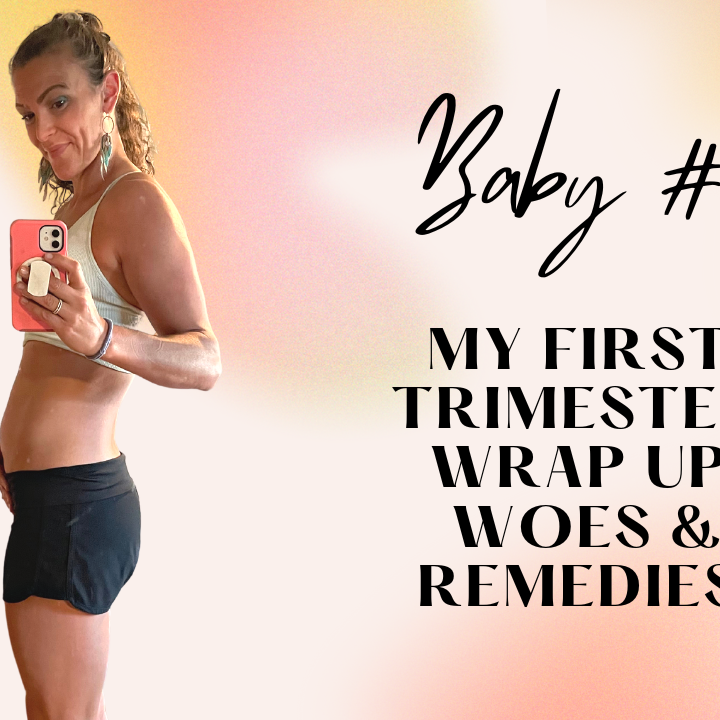
Background:
- Mother
- Doctor of Chiropractic
- Owner of Live LOUD
- Personal Trainer & Health Coach
Check Out Some of Our Other Blog Posts and Podcast Episodes
Baby #4 First Trimester Woes & Remedies
[00:00:00] Dr. Michelle Gurule: Hey, Michelle here, and I decided that with my fourth pregnancy, I am going to do my best since I am busy with three other children in homeschooling and. Being a chiropractor and online course creator and all these things, and being tired in pregnancy, that I would like to document a little bit of my own journey, which I am now outta the first trimester and I have more energy, um, that I’m hoping that I can do this more consistently.
[00:00:38] So, um, this is a little bit of a blog slash I’m on Instagram live right now. We’re all posted as well underneath my page. And so this intention is just to give you an idea and. To what pregnancy can look like during the different stages and what it’s looking like for me, cuz everyone’s journey’s gonna look so, so, so different.
[00:00:56] So, um, I’m gonna start going into second trimester in my next blog, but I’m going to be focusing on what just happened in first trimester because this is my fourth time and. My goodness. Like it still comes as a shock as to how exhausted I am and I feel like most people feel at least that exhaustion symptom.
[00:01:19] So a lot of people may not feel nausea. Yay, lucky them. Um, they may not feel some of the other symptoms that I’m gonna go through, but most people do feel that just extreme fatigue, just like what? I just got hit by a bus. I’m so tired. So, Let’s start off with first trimester in that the first two weeks of quotes, pregnancy, you’re not actually pregnant, right?
[00:01:40] That is your first part of your cycle before ovulation when you get pregnant, but it counts on tax onto your, uh, Overall time, if you will. Um, so first trimester, some people find out right away cuz they’re tracking and they just have this beautiful body intuition of, I’m pretty sure I just got pregnant on the ovulation cycle.
[00:02:00] Or they know exactly when they ovulate, they know exactly what side they ovulate on. And they’ll just know they’re pregnant. And then some wait for their period to come cuz they’ve been trying. Then period doesn’t come when it should. And then they wait a few more days and then they check with the pregnancy test.
[00:02:15] Um, and then some people it’s a complete shock. They find out weeks and weeks later when they’re like, My period should have come a while ago. So for me, this um, is our fourth kiddo and I had a pretty big suspicion that I was pregnant. I did have an intuition cause I was tracking my cycles as to. Which side I ovulated on and the sensation that I felt along with, if you track your cycle, which I highly encourage at some point doing because it’s really, uh, empowering to know, um, when you ovulate and you can check that in a lot of different ways.
[00:02:48] So there’s a book called, um, The Fifth Vital Sign. I’m spacing on the author’s name. I think it’s Lisa somebody. Um, I can put it in the comments later, which is a phenomenal book. I think every female and even male should read it cuz it goes through. All of the things about your cycle. And the fifth vital sign is essentially that your cycle, your period, your whole like 28 to 35 days tells you a lot.
[00:03:09] If it’s too long, too short, you’re bleeding heavy. Bleeding light tells you a lot about it, but it also goes into uh, how to track your cycle and know where you’re at. And there’s also another book called Taking Charge Your Fertility. That’s also really. Same kind of page with that information. So you can check your cervical fluid, you can check your cervix position, you can check your cervix.
[00:03:32] Um, how soft it is, how hard it is, um, open or closed. There’s all these things you can check. Of course you’ll have heard about checking temperature temperatures. Interesting because it gives you an idea if you’re tracking multiple cycles as to when you ovulate it, but it’s information after, so it’s not really the only thing you should rely on until you’re getting consistent cycles and there’s so many fertility.
[00:03:53] Like classes out there that you could take and do and learn? Um, my, one of my best friends, um, she’s in Chi, she was in chiropractic school with me. Um, her name’s, uh, Dr. Deb Merin. She has a course that teaches like patients or even, you know, anybody layman who wanna learn about their cycle, um, to learn more about this.
[00:04:12] So she’s a great. Uh, her Instagram handle is Coronado chiropractor, where you can learn, uh, more about that fertility information. There’s a great Instagram handle called, uh, I think it’s Fertility Friday. Um, and so there’s just a lot of resources where you can be empowered to know your own body, and so if it grosses anybody out to hear cervical fluid, You should really question yourself, Like, why does that gross you out?
[00:04:34] Because it tells you quite a bit about what’s going on. And I truly believe that if more women were aware of this, then they would be able to not get pregnant, or it would really help them be able to get pregnant. And, um, taking charge of your fertility and the fifth vital sign really helps with that. So first off, like I said, people are gonna find out different points in time when they’re pregnant.
[00:04:52] So I had some, some suspicions. A couple days after I missed my period and kind of sat on it, sat on it, and just really, um, before I talked to my partner, was like, Okay, how do I feel about this? Because I need to process this before I ask somebody else to process this, Right? So, found. Pretty sure that I was pregnant.
[00:05:13] So I mentioned to my husband Antonio, like, Hey, I think this is what’s going on. I think that I’m pregnant again. Um, to which I did one a fourth kiddo. So this is not a bad thing in any way, shape or form. I did want four kids. Um, but it was like, whoa, okay, this like might actually be happening. And wow, this is a lot cuz we had just moved into our new house and just a lot going on with the property.
[00:05:36] And so that can be a lot of shock to some people is like finding out. It can be a shock in a oh crap way and it can be a shock and like a yay way. But either way it’s a lot to process. So some people will process it first, tell their partner maybe they’ve taken a test. I processed it, then said I think we need to take a test.
[00:05:54] Then took a test and we looked at it together and was like, okay, guess we’re doing this. Um, and then there comes the next thing of like, okay, so maybe you find out in, you’re four weeks pregnant, so you are. Right around the time of your period is missed and you’re about four weeks at that point, cuz you have the two weeks prior to ovulation and then you have your, um, two weeks that you’re pregnant before you’re missed, period.
[00:06:18] So people are finding out between four and six weeks commonly. And that’s usually a zone where most people aren’t feeling sick yet. They’re not having a lot of the symptoms. Some people will, but there’s not a ton of breast tenderness quite yet. There’s not the nausea quite yet. They’re in this like in between spot.
[00:06:34] So, You’re thinking now, Okay, find out in four weeks. When do I announce? And so a lot of people hear the, I’m gonna announce at 12 weeks or 13 weeks when I am into my second trimester. Placenta is well formed. A lot of the chso issues and, um, common issues with miscarriage will have happened before then.
[00:06:54] Not always, but will happen before then. And so then it’s a safe time to tell people, well, for some like. The 13 weeks is a long time to sit on a secret if you feel like it’s a secret and it’s not anybody’s news but yours. Um, but for me, I don’t like sitting on that. I’m like, I have patience on cha on chat with every day.
[00:07:12] I am a chatty Cathy. I’ve got close friends. I got family. Like, it just seems weird for me to wait that long. So as soon as we found out, we knew, we wanted to make sure both of our families knew. And we wanted our kids to know before them, but the kids see the families all the time. So we had a kind. Tell them and then know we’re gonna tell both families right after that.
[00:07:35] And then once we did that, we were happy with anybody knowing. So the reason why I let people wait is because if you happen to have a miscarriage, everyone you just announced it to on Instagram or all the friends you told, They might still be checking out on you, How’s pregnancy, how’s this and that? And then it’s a lot to then tell them like, Oh, you know, we actually had a miscarriage.
[00:07:54] And you know, there’s a lot of people now who are being really open about their miscarriages because it’s really common. I think it’s something like one in four might even be more common. So, um, it, it’s just, it’s, it’s a topic that should be discussed, but it may be not be something that you wanna discuss with everybody.
[00:08:09] So it’s really a matter of you tell the people who you feel okay telling. If you were to have a loss, that’s the really one of the bigger things about it. So finding out shock in a great or bad way depending on what thing going on in your life. And then when do you announce is gonna be a big thing, and that’s gonna be totally family and person dependent on what things look like.
[00:08:30] And then who do you announce to? Do you wanna do a big. Seen on Instagram or you know, a big party or do you just wanna tell your close friends? And there’s nothing wrong with either way, right? It’s just what goes on for you and then how do you announce it, right? So, um, first kid, you know, sometimes you’re like, come do something really cute and like let them know in a cute way.
[00:08:49] Um, and then, you know, it changes each kid. So for us, um, for our families, we didn’t do anything like super grandiose this time. We basically just had the kids say, Guess what? We have a surprise for you. And then t is our third kiddo and we. Tage is gonna be a big brother. And they’re like, Wait, wait. Oh, oh.
[00:09:06] Um, so there’s so many different ways you can take pictures. You can have them wear a shirt that says, I’m a big brother. You can have so many things you can just, you know, have a card that has an ultrasound in it, but there’s so many different ways you can do it. And then we had a fun post because of our new farm property that we just said.
[00:09:20] We made a sign that said One more set of farm hands. We had our barn in the background and all the animals and things like that. To announce to like the Instagram world and just a cute picture. Um, so let’s talk about first trimester because it is a whirlwind, which is honestly why I have not come on here and do done this vlog and live yet because I’ve wanted to.
[00:09:38] And then it’s just like, it’s just like too much to handle. It’s like way too much so, Uh, because you’re just too tired. So, like I mentioned, I have a chiropractic practice with Antonio. I have an online course, I’m building an online course, uh, like company with my friend, uh, Katie Braswell and. It’s just like one of those things that’s like, I, I’m too tired with that.
[00:10:02] And then having three other kids and homeschooling and doing all this work on our, our, our new property that’s an acre. It’s just, it’s been a lot. So, uh, but I do think it’s important to share what’s going on with each person because it helps people feel less alone, get ideas as to what you can do for certain symptoms.
[00:10:17] So I’m gonna tell you some of my symptoms and what I have done for. Um, and then also just like I’m coming from the perspective of this is my fourth time around, so everything, I feel like the first time was just so much more like, ugh, this and that. And I know like when things are gonna end for me and I know how things go, and so it’s, no, none of this is a shock for me.
[00:10:37] I don’t have the nuance of it being the first time I’m becoming a mom on top of all these other things. So, The first symptom, like I mentioned, is being tired, and so one thing that I was able to really let go of with subsequent PR pregnancies after my first is just being okay with taking naps and being okay with going to bed at 7:00 PM or 8:00 PM and just not feeling bad about it.
[00:10:59] Now I do just if anyone knows me, love being productive and efficient and just getting stuff done, and that is the part that I’ve had to like dig deep and be like, It is okay. It’s okay. Being tired, letting myself take those naps because I know it’ll go away. But each time I forget how stinking exhausting it is, how tired it is in first trimester.
[00:11:24] Um, another big symptom is starting to have breasts that are like getting fuller again. So I was breastfeeding the whole time. So, um, my two and a year old is still breastfeeding. Symptoms have been fine until actually the past two weeks, which is the start of my second trimester, which is showing me there’s a hormone shift.
[00:11:41] And then it’s been a little uncomfortable, but he, he’s still getting milk. I’m still nursing him because he wants it morning and night, sometimes around nap time. Um, I’m happy to answer any tandem nursing questions, pregnancy, nursing questions cuz there’s a lot that comes along and I’ve now nursed through this will.
[00:11:56] Third pregnancy I’ve nursed through, so I’m happy to share that. Um, I’ve had a two year old on one breast and a newborn on the other. I don’t know what it’ll look like this time. Each journey is different, but I’ve basically breast fed for seven years. So it’s interesting because breast size goes down over the course of time.
[00:12:11] Breasts start kind of sagging a little bit. They’re no longer full, and then suddenly they’re like full and lifted again, which is interesting to see again. And then they’re starting to be tender as well. So that’s a symptom. Nausea and vomiting. So luckily this time I’ve only thrown up a couple times and.
[00:12:27] It does actually end up making me feel a little bit better, but it sucks. Like no one wants stuff to throw up and the nausea is just a bummer because it’s just like, you wanna enjoy food? No food sounds good. Like, you know, you needed something. And this time I had like some really bad like stomach cramping, um, where I was like, I wanna eat, but it hurts and it’s like cramping.
[00:12:46] And it was not just nausea. So that was really uncomfortable, but different this time is that I had, um, nausea from. Six, seven weeks until 11 weeks with only intermittent days of nausea and I can’t figure out why. Cuz the other three pregnancies, I was sick until about 18 weeks. Um, Throwing up a lot, and I do have a suspicion that because I’ve gone a different route this time with my supplementation for pregnancy, I’ve actually chosen not to do a prenatal, which sometimes I’ll still recommend for patients because that’s easier for them.
[00:13:19] But I’ve gone more of like the whole foods route and done like beef liver. Cod liver oil, Um, an ionic magnesium. Really focused on making sure I’m eating eggs every day, really tuning in to those types of foods. Um, I think might have been what’s helped my nausea also, what been really conscious of making sure I’m eating consistent meals to keep my glucose balanced and eating, making sure I’m eating a good amount of protein.
[00:13:45] So I think that even though I knew some of this stuff before, I did some slightly different. Ways of doing it, and that’s the only thing I can figure that is making that different for me, or it’s just a different baby and it likes me more. I don’t know. Um, One thing that’s frustrating that I’ve found is that like food is all over the place.
[00:14:03] So, um, I eat really healthy in my everyday life and I’m eating things like salads for lunch and definitely eggs every morning and like amazing veggies at night. And it’s like, do not give me a salad during first trimester. I probably don’t want very many veggies. I’m gonna try to eat them, but like, ugh, like they’re not gonna digest and be great.
[00:14:22] I want carbs and I want. I don’t wanna say shitty foods. I don’t like to call food bad or good, but like I wanted french fries this time and in the past I’ve wanted like sub sandwiches or pizza. And I’m not saying those things are bad, but it’s like all I want type thing. Um, and it’s the only thing that’ll get my stomach to settle.
[00:14:37] Like why would like fast food french fries be the only thing that makes my stomach not feel nauseous, but like a beautiful meal would not, It’s just, it blows my mind every single time. For me, I have to let go of that and be like, It is fine. First trimester. Not trying to be a hero here. This is just when I need to accept that I ate really well prior to pregnancy.
[00:14:58] I was, I’ve been still able to take the, the way that I’ve chosen to, in quotes, like supplement, um, and. Make sure I have all those beautiful like foods added in and just be okay that I can’t get all the veggies I want, or exact levels of protein and carbs and just eat right. And just trying to be not nauseous, essentially.
[00:15:18] So it’d be like one day, it’d be like chicken noodle soup is all like all the, it seems like it can settle. And so then like Antonio makes a bunch of chicken noodle soup and then it’s kind of like, I don’t really want that anymore. And the next day I. I can’t even think right now, but like, you know, some other type of soup or I want some other type of food and it’s like, Ooh, I want this as a snack.
[00:15:34] And the next day different type of snack and it’s like just food is all over what sounds good. And so just leaning into that. So I lean into just whatever feels good. So for nausea, I’d suggest try to keep your blood sugar as balanced as you can. Making sure you’re getting protein, even if it means like maybe you just got a spoonful of like peanut butter or almond butter.
[00:15:53] Um, or you know, maybe you don’t need a ton of dairy normally, but adding in like a raw cheese might be helpful. Um, and trying not to have naked carbs. So if you’re like, I have to have crackers okay. At the crackers, but see if your body’s okay with adding cheese to them. Or some other protein, or if you can do avocado, like does that work for you?
[00:16:11] Um, and just plain with different ideas. Um, one, something that really has bothered me during this pregnancy has been constipation. Got really bad actually. I feel like the worst it’s been. And I, I was doing so many different suggestions with teas that people had. Of course, the magnesium increasing my water, you know, I knew I just wasn’t gonna have a hard time with increasing the veggies, so that was challenging.
[00:16:33] Um, and one day I had been like four days, which is like not good like I was supposed to, doing an n. Um, I hadn’t gone to the bathroom. I just could feel it. Like I’d said so much in my like, intestines. Uh, my mom even said like, Oh, I can see the baby bump now. I was like, No, it’s not even the baby bump yet.
[00:16:50] It’s straight up like bloat in that I haven’t gone to the bathroom. It’s like, you’re supposed to poop every day, you know? And I do, and I just couldn’t this time. Um, so I actually been having, starting to have some sacral stuff going on. I kept forgetting, having Tony adjust me, and finally I was like, Okay, can you adjust me this morning?
[00:17:06] Kid you not after four days and trying all the magnesium and upping all the things, he adjusted my sacrum. And then upper cervical as well, which are two areas that make babies poop a lot. Um, when I’m working on them and. I would do a bathroom like two minutes later and it was great. And then that day, like four other times.
[00:17:22] So chiropractic truly affects the nervous system. It can get bowels moving for sure. I can really attest to that. A lot of my baby’s gonna attest to that as well. Um, and then one other suggestion that I actually got from a doula that used to be my area, Alyssa Mcgi. Um, her Instagram handle, I think is at St.
[00:17:40] Augustine. Doula I think is what it’s, But she suggested a couple different teas to me and then she also suggests to eat raisins throughout the day. So I’ve been eating raisins throughout the day cause we had ’em anyways. And I actually think that that with chiropractic has been really helpful for my body cuz I haven’t increased my magnesium.
[00:17:56] But it could also be a hormonal shift cuz now I’m in second trimesters. So that is a suggestion that I would’ve never thought of before because you hear like prune juice and things like that. But I’ve just been chewing, not a time, but a little raisins throughout the day. And that seems to. Helpful. And it’s like a, a lot of times I’m like, Why do I want like gummy bears during pregnancy?
[00:18:14] I want some of these sugary gummy bears, but the raisins have like, made me not feel the need for that. Um, let’s see, uh, other symptoms, So pregnancy rhinitis, which is where you can just get super, like just congested. There’s more mucus and fluids during pregnancy and um, a lot of, um, congestion inflammation can happen from that.
[00:18:35] There’s really only if it’s not allergies, which I also have allergies into the mix of this, which, um, course 10 has helped me a lot with allergies. And then I have a homeopathic, uh, remedy that I’ve used as well that has been helpful but hasn’t seemed to be able to hit the allergies that are out here in Colorado right now.
[00:18:52] But two things that are really helpful, um, that I’ve found to help me breathe at night so I’m not mouth breathing cuz then you wake up with a sore throat and like, you don’t wanna mouth breath, you don’t wanna be a mouth breather. That’s not great. And I’m not classically, but my nose has been really stuck from this pregnancy rhinitis, um, is.
[00:19:08] There’s the breath right strips, which I just have an off brand nasal strips. But the problem with this is it actually helps really well like lifting up and helping like open that nasal passage but you can’t wear too many days in a row or like makes this skin really sensitive. And I ended up having like a little piece of skin get so sensitive, like peeled off and I was like, Ow.
[00:19:25] So this little like sc for a little bit. So I then I was like, I don’t wanna wear those for a couple days. So then I got these really cute and sexy antis snoring nose vents and I don’t believe I was. Snoring. We got these off Amazon and this is what they look like, and you put ’em up your nose and it opens and, and allows you to breathe.
[00:19:42] So that’s been helpful for me as well. Um, Amazon, they come in in 12. I’m like, I don’t need 12 of these, but I have 12. Um, and that’s helped a lot. And then, As a chiropractor, I do hate admitting this cuz it definitely can crank on the neck a little bit. I’ve done like a slight, ever so slight incline just so that I’m not flat laying back.
[00:20:00] Um, so I’ve done a little slight incline, but I’ve been really aware of the angle to help with my neck. And then I live with a chiropractor so it can help my neck. Um, but I’d rather breathe at night cuz that’s really, I notice that if I’m not breathing well through my nose it increases my nausea. Um, and it just makes me feel more fatigued cause I’m just like, I’m like heavy breathing.
[00:20:17] So something to consider there is, If you’re not breathing well, that could be impacting these other symptoms. Like breath is really important. Making sure you have nice good breathing. Oxygen flow is really important. And then, uh, a neti pot is really helpful as well. And you can make your own salt and baking soda solutions.
[00:20:35] Um, but that doesn’t always cut it either. So kind of a combination I’ve had to flow through. Um, other thing, during pregnancy, I am hypermobile, so I screen all my patients to the bait and scale, seeing if they’re hyper mobile because hyper mobile patients I’ve found. More likely to have pubic bone pain and si pain during pregnancy.
[00:20:53] And I am hypermobile. I have not been working out as much and doing stability exercises, so then I added them back in cuz I know what I need to do. Um, I’m just tired and it’s hard to do it. So it really helps me reminders like, relate to your patients. This is how they feel too. Um, but that sacred. Um, I’ve been feeling at night, so I have to shift a little bit more, and I’ve already had to add in a sleeping pillow, add in my stability exercises, so things like glute bridges, squats, uh, possibly cla shells, um, lateral walks.
[00:21:25] And when I add those in and just strengthen my glute muscles and hip stability muscles, that really helps with the sac issues a lot. And I haven’t had them during the day, but the fact that they’ve been sneaking in at night is let me know, like, Okay, really time to do these things. So, I love people to come in and see me to do the chiropractic and rehab work before they’re in pain, um, so that we can get ahead of things so that they’re not in pain during pregnancy and at the start of anything come in so that we can help you.
[00:21:49] Um, then there’s also, so actually I wanna touch note on that is that like I have fitness as part of my life. It’s part of my identity, but as I mentioned, one of my first symptoms, a lot of people feels tired. I have to let go of that. Life is just a little bit different in first trimester. Working out is really just not high on my agenda.
[00:22:07] I’m tired. I have so many other things to do that I let myself. Be okay with not working out. And I’ll do my rehab. I’ll fit in a few squats. I do a lot of yard work and I’m like, I’m moving. That’s what I want is movement. It is okay if I’m not working out. During first trimester, I really was fitting in walks, again, yard work.
[00:22:27] So I encourage patients, can you fit in a few strength things just to help stability. So maybe just a few glute bridges, a few squats. Can you go on some short walks just to get outside and get a little bit of movement. But in terms of going to Orange Theory or CrossFit, your HIT training or going on runs, if you don’t feel like it, lean into that and be okay with it, you will get back into it.
[00:22:47] And I already feel myself getting back into it now that like I’m getting my energy back and I’m feeling better. I’m not nauseous, but when you’re nauseous, you’re not gonna go for a run or lift weights. Like it doesn’t feel good. And there are studies that say the exercise can reduce nausea. It never did for me.
[00:23:02] So fourth pregnancy, I’m like, I’m just leaning into, I’m not working out right now. And that is okay. I’ll get back into it. And so that is what I’m getting back into in second trimester. Um, so first trimester sleep struggles can also start. So I’ve found some nights I’m like waking up every other hour. Um, magnesium can really help with that.
[00:23:20] Um, and working out can actually help with that quite a bit too for me. Um, so once I start working out again, it really helps, uh, getting into deeper sleep. Um, and then, let’s see. Oh, the last thing I wanna mention and then I’ll stop here, is that one of the hardest parts for first trimester for me is not feeling like I’m being productive, which I had mentioned already, and that’s really hard for me within the family because it’s like, I don’t wanna cook meals cuz I’m nauseous and I’m tired and I, you know, I was like making bread all the time.
[00:23:51] I didn’t wanna do that for the family. It’s like, oh, going out and helping with the chickens and ducks. Like, no thanks, like I’m too tired and helping get the kids to bed. Tired and don’t feel good, and just like not contributing the way that I wanna contribute doesn’t feel good for me. Um, and then in the bi in my businesses, it’s tough to just be like, I, like not like I’m gonna go to bed
[00:24:11] I’m like, I have emails to send out, I have notes to do. I have all these things to do to get going on another online course that I’m doing. It’s like, just can’t. Um, and then I could feel my energy ramp back up around like 13 weeks where I’m like, Yes, get this done. Get that done. I knew it would be temporary, but in first trimester, if you are not feeling productive or efficient or feeling like, man, like your partner’s having to carry so much of the load because you don’t wanna cook and you don’t wanna like, help the kids get to better, whatever it is, like, it’s okay.
[00:24:42] It, it won’t last forever. Your fatigue and exhaustion is real. Your nausea is real, and like no one expects you to be a superhero at this point in time. And so that’s also me speaking to myself like it’s okay. And I will say it did take at least a full pregnancy, maybe two for me to be okay with that.
[00:25:01] This is my journey. Um, I added just extra stuff to it, but those are some of the main symptoms that I’ve had. Um, Bloating’s another one. So a lot of us will feel like super flat stomach in the morning. At night. You’re like, Am I eight months pregnant? What’s going on? Um, so bloats really normal. It can be uncomfortable.
[00:25:18] I spend a lot of time because of the constipation and bloat in first trimester, already starting to add belly oil. So I really like wish gardens belly oil. I have this in the office and so I just rub this on at night. I rub into my muscles. Um, I note where my uterus is. So, um, you know, by, 10, 12 weeks, it’s reached past the pubic bone.
[00:25:39] So then I start feeling for it. It’s a little hard, and then I kind of watch and observe and feel it grow up and just feel that like I’m like, This feels hard. Oh this, that’s like my uterus. And feel those shifts and changes in my belly. And it’s a really great way to connect before. The baby’s moving. Um, and then just starting early with the oils and nourishing that skin, that’s gonna go through a lot.
[00:26:00] Um, and then I’m just in the habit of, I’ve just massaged my belly at night and I do that every night during pregnancy. Um, and it feels great and it’s really helpful to keep your abdominal wall muscles, um, just like. Loose and pliable and not like super tight and tense. And I did a lot of wheelbarrow like, like dig like bunch of dirt into the wheelbarrow and like lifted it and moved it over here and did a ton of loads and I noticed that.
[00:26:24] So I have like a trigger point in my abdominal wall. And so I don’t want that trigger point to get worse and worse that it’s an extreme pain as things start like expanding. So it’s like I grab this oil. Then I got all over my belly and was digging in and, and working on that. So, um, just a few things. My first trimester, next time I do a live in a blog, I’m gonna come on and talk more specifically about what I’m doing each week or every other week and dive into the movement.
[00:26:47] I’m doing symptoms I have. Um, the rest of it will be shorter, but this has been like encompassing all a first trimester for myself. Um, letting you feel like you can give yourself some forgiveness if you’re not doing a lot right now. Um, and if you have any questions, just reach out to me, cause I’m happy to answer those pregnancy questions.
[00:27:04] All right, Bye you guys.
–
What Exercises Are Safe To Do During Pregnancy EP|65
Live LOUD Life Podcast
Lafayette Colorado
Episode 65
EP|65 What Exercises Are Safe To Do During Pregnancy
With Dr. Antonio Gurule
Is it safe to exercise during pregnancy? The short answer is yes. Tune in as Dr. Antonio lays out the benefits and guidelines for working out during pregnancy.
Episode Highlights
3:50 – Defining exercise during pregnancy–it’s different for everyone
5:54 – Is working out during pregnancy safe? Long story short, yes!
9:54 – What you can do besides walking
12:05 – Diastisis recti
15:32 – Alternative core exercises: goblet squats, deadlifts, planks, etc.
About Dr. Antonio Gurule

Background:
- Father
- Doctor of Chiropractic
- Owner of Live LOUD
- Personal Trainer & Health Coach
Check Out Some of Our Other Blog Posts and Podcast Episodes
Anthony Gurule 00:00
Hey what’s up guys, welcome back to another episode of the Live LOUD Life podcast. My name is Dr. Antonio, I’m your host of the Live LOUD Life podcast. My wife and I, we co-own Live LOUD Chiropractic and Coaching here in Lafayette, Colorado. We are just outside of Boulder, Colorado in Boulder County. And our mission is to help families. We want to help make families stronger, so that we can build a stronger community. We want to help guide you to the adventurous life that you and your family were meant for. And we do this through chiropractic and coaching. chiropractic, obviously being more of a hands on approach, more of a clinical conversation, clinical diagnostics, but the coaching aspect is really what we believe is, you know, the foundation of what our system methodology, whatever you want to call it is, because a lot of this comes around through just coaching suggestions and recommendations. also, you know, obviously within that comes into clinical prescriptions of certain things to eat or supplements, so on and so forth. But it’s coaching a lifestyle, it’s coaching, it’s coaching a philosophy and a foundation about how to live an active healthy life as an individual, and setting an example of a healthy active life for your family, for your immediate family, for your friends, and more importantly for your community. So stronger families to make a stronger community as a whole would be a win win, right? And that’s what we want to be able to do. we want to be able to help fill in the gaps in the holes that you’re maybe not getting from, from other roles and conditions.
Anthony Gurule 01:43
And today that’s in particular where we’re going to talk about. it’s going to be a little bit more of a shorter episode because this is more of a quote unquote, you know, just discussion around how to lay out a framework and a better understanding of how to work out or what exercises are safe or maybe not safe during pregnancy. This is a very, very common question that we get.
Anthony Gurule 02:12
My wife Nichelle has created a mini course that has some workout ideas, recommendations, and prescriptions than laid out into a workout. She guides and educates other clinicians on how to broach this topic as a chiropractor, how to better serve prenatal patients through chiropractic care, but also exercise recommendations and prescriptions, having recommendations with other personal trainers within the community whether that’s CrossFit whether that’s Orange Theory, chatting with coaches and owners and saying hey, if you have prenatal patients and they’re having these types of symptoms, or this has happened, here’s some better recommendations, not modifications. We call them lateralizations–you’re just you know, you’re doing something something different or something else we you know, we borrow that term from Charlie Weingroff, who’s a physical therapist and strength conditioning coach. But it also and also doulas, right, doulas and midwives and OBs who are directly involved with the prenatal process from nearly conception all the way through, having this conversation. we know that exercise is important during pregnancy,
Anthony Gurule 03:19
There are so many different studies that talk about the benefits of exercising during pregnancy, not only for the mom, but also for baby, which is quite interesting. They’re seeing increased cognitive-what’s the word I’m looking for? Excuse me, their cognitive output as a as an as a child through as they age is actually better from moms that actually worked out during pregnancy.
Anthony Gurule 03:50
Now this is tough, right? How do you define working out or exercise? it’s different for everybody. But we want to, and we encourage that, and yet we’re sympathetic to the different stages of life, aches and pains, so on and so forth, which obviously would limit what you can do from an exercise perspective. So you know, it’s a bit of a gray area on determining what is working out? what is exercise? What are the physical guidelines or recommendations for pregnancy? And without getting into the like, nitty gritty detail of every single thing. And obviously, every potential situation, if you had this versus this, what could happen? we’re not gonna be able to do that. What we just want to lay out is what is what are we trying to accomplish here, and we want to encourage you to stay as physically active as possible.
Anthony Gurule 04:41
And one of the things that constantly comes up is, well, should you add something in that you have not already been doing? Let’s say for instance, someone just through the stages of life with work and kids or whatever that is, they were not able to work out as much before they got pregnant, but now that they’re pregnant, whether they have more time or they understand the importance of exercises during pregnancy, well, would we say, “Well, you haven’t been exercising, so you shouldn’t do too much.” No, that doesn’t, that doesn’t really make sense. Now, we would encourage not to do too much, there’s obviously, you know, a too far swinging the pendulum of the other way. But we wouldn’t say “no, don’t exercise because you weren’t doing something before,” we just have to find those first few stepping stones to help them start to gain some momentum. and help hold their hand, if you will, So that their technique and they feel confident about lifting, or how far they’re walking or whatever that is. And that’s an important topic, because a lot of times people want to add things in, but they weren’t quite ready or weren’t doing them before. And they then assume that they’re not able to do them at all. So you do have to take that in consideration, there is a ton that you can do, and that you can still add, even though you weren’t doing them prior to pregnancy.
Anthony Gurule 05:54
Now on the big questions is, is it safe? you know, outside to contact sports, or different things like that the majority of what you’re going to do is safe for pregnancy, right? Rock climbing, we have pregnant patients that have been rock climbing before, obviously, there’s a certain inherent risk with certain sports or activities. You know, you could fall off riding your bike, you could fall over running, right, so we’re not encouraging any of these by any means. We’re just kind of, you know, setting some suggestions, if you will. And you have to take into consideration.
Anthony Gurule 06:31
Now, there are certain things to consider when you’re talking about like weightlifting, and how heavy and the intensity that you’re doing. And if you’re doing Valsalva movements, which is essentially holding your breath to maintain a more rigid or stiff torso, as you’re seeing changes in blood volume and blood pressure, you know, you do have to take that in consideration. And that is again, of course a conversation with your provider that is managing your, your pregnancy, but we recommend Mama’s weight lift, or do resistance training. During pregnancy, again, we talked about about load management and the intensity and things like that, but you can still lift and do fairly intense things. And it’s a fairly as a you know, as a scale and a wide range during pregnancy and see a ton of benefit from that. Now, are we trying to hit one rep maxes and PRs during pregnancy, I mean, some would argue yes, but I would argue, why, that’s not really an accurate representation of what your strength is anyways. So you know, you do have to to kind of keep manipulating the numbers and the weights and the intensity and the sets and reps in order to do it. But weightlifting and resistance training is safe, and it is effective. Now, outside of that, there’s not a lot of unsafe things to do, again, outside of contact sports, or things that would elicit, you know, potential trauma to you or baby based on impact we’ve had, again, not our recommendations, but some have tried very just easy scheme, because they’re in the winter months, and they wanted to and they felt very confident about not falling. So you know, you have those types of things.
Anthony Gurule 08:16
Overall, again, we’re talking about movement. You need to move, and it’s good to get your heart rate up. And it’s good to breathe hard. So that doesn’t mean just because you’re pregnant, you can’t do HIIT training or circuit training or CrossFit or Orange Theory. But you do have to listen to your body and understand certain signs that would indicate that things might be too much, right? Now those are going to be different for everyone, but a lot of this comes down to you know, lightheadedness, you know, breathing too hard. Certain aches and pains within lower extremity, chest, abdomen, so on and so forth would be obviously like your more extreme ones. If you’re becoming pale or anything like that, I mean, again, these are the same criteria, though, that would be if someone else was working out or training too hard. So it’s realistically the same thing. It’s just that your threshold level for all those most likely have gone down. And depending on what type of an athlete you were before, you’re going to be maybe a little frustrated that you’re not able to do the things you were able to do previously, which makes sense. But if you’re someone who wasn’t exercising before, you’re probably going to be a little bit more hyper aware of that, of just feeling that shortness of breath or that uneasiness. So again, we’re not saying you have to push through that because we’re not trying to set yourself up for a strength and conditioning program to increase your metabolic capacity to increase your strength and conditioning during pregnancy. We’re trying to help you maintain a healthy active pregnancy.
Anthony Gurule 09:54
Now, walking. walking is great. but in general, we encourage you to do something above and beyond walking. Obviously, again, certain things would dictate that you would not be able to do so. And this is again, any exercise. Any exercise that you do during pregnancy needs to be consulted with and work through and have a conversation with the primary physician who is managing your pregnancy, whether that’s your nurse practitioner, your midwife or your OB or obstetrician, right. But we would encourage more than just walking. walking is fantastic, but that’s kind of like your baseline minimum, right? Just like our activities, or recommendation activity guidelines. We want a few days a week of where we’re kind of just doing this steady state getting our steps in, you know, kind of pushing ourselves, we’re huffing and puffing, but still just kind of at that conversational level, but you’re not really getting a lot of benefits outside of that.
Anthony Gurule 10:55
So if you’re just walking, high five. kudos. can you do something more? Can you do some bodyweight squats? Can you do some bodyweight, you know, good mornings? can you do some walking lunges? do you have a suspension training, we’re able to do some bodyweight rows? Do you have some bands that you can do some rows with? You know, there’s a lot that you can do that allows you to get a little bit more out of that. Now, again, this all comes back down to preferences of exercises that you like to do, because that’s gonna allow you to maintain the most consistency, but then also the intensity that you like to do. And we do encourage having an open mind and at least being willing to try some high intensity things that allow you to still get your heart rate up a little bit. And it’s okay to lift more than five or 10 pounds. And not saying that that is a bad thing. There’s programs out there where it’s all directed around that where it’s lighter weight, high rep, but I just don’t want individuals and mamas to feel like they’re not able to do more and or being ashamed because other people are just saying they should back off because they’re pregnant. “why would you need a lift that much?” It fits within your strength, and your comfort, and your wheelhouse, that is totally fine.
Anthony Gurule 12:05
Again, you if you’ve been doing that enough, you understand the risk reward ratio and having a conversation with your practitioner has driven us to kind of help navigate and guide as you start to get further through pregnancies, what things maybe we need to change or manipulate. But that’s totally fine. Now outside of that, the question around safe also comes up around core exercises. diastasis recti, pelvic floor strength, so on and so forth, we want to enhance the capability of understanding how to control tension within your abdominal wall and your pelvic floor through pregnancy, because the pressure is increasing due to baby taking up more space. But we’re not we’re not necessarily we’re not gaining more strength, right.
Anthony Gurule 12:45
And so what a lot of people assume it’s when we’ve seen this, is “I don’t want diastasis. So I’m doing more core work to prevent diastasis from happening.” diastasis recti will happen in 100% of moms, it’s estimated at the week 35 Everyone will have some form of it. Now it is technically not a quote unquote diagnosis, though, until 12 weeks postpartum, because it is a normal thing that everyone will get. So you can’t diagnose someone with something that everyone will get–doesn’t make sense, right? So after that, though, if you still have weakness or spacing issues, then we can have a you know, a stronger conversation about putting a diagnosis on that.
Anthony Gurule 13:26
But what we’re trying to enhance and help is what exercises are quote unquote, not safe versus unsafe, but adding too much pressure or tension into the abdominal wall or the pelvic floor and creating more laxity. again, as that pressure for as baby’s growing starts to put more pressure on the pelvic floor and the abdominal wall. If you’re doing more things that increases the pressure within the within the abdominal cavity that’s going to push on that separation even more and/or push on that pelvic floor even more, creating potential incontinence or prolapse issues and/or more bulging and doming within the abdominal wall stretching out that separation or that gap even further, potentially making the recovery process more challenging or slightly longer. I’m not saying that it will but potentially, so we do have to take that in consideration. So we go through activation exercise of the pelvic floor, of the abdominal wall so that you better understand how to control those pressure increases while you’re lifting or exercising so that you simply can stay at a management level.
Anthony Gurule 14:28
And that in turn, helps you get through pregnancy of understanding how to lift up your older kiddo, having to lift up dog food or anything like that. It’s just managing and controlling pressure. So there’s really not anything that I would say that safe or unsafe. Now, things that we would advise against for core exercises is sit ups or crunches. You know a lot of those things that create like hanging knee raises and different things like that during pregnancy. A lot of those things that create a lot of intra abdominal pressure and tension. and especially during a flex position, that tends to put a lot more pressure on the abdominal wall, the separation where diastasis will occur as well as the pelvic floor.
Anthony Gurule 15:09
So, you know, while we never say never, there’s definitely a category of things that we definitely urge against because the risk/reward benefit and again, risk not being “injured,” But risk of potentially putting more pressure and making the recovery process on the other side harder, is not is not something that we find to be as advantageous. But you can still get the benefits of quote unquote, core exercises through full body movements such as goblet squats, such as deadlifts, you know, depending on the phase that you’re in, push ups, which are, you know, a dynamic plank. or being able to do a TRX row, which is a reverse plank as you’re just lifting yourself up. three point rows where you’re on, you know, two hands or doing like a row on a bench, where you’re in a tabletop position that’s adding anti rotation exercises. So there’s a ton that you can do that still highlights and isolates, the core isolates, sorry. that highlights and will emphasize core activation, but through a full body compound movement. And what’s great about that is during pregnancy, depending on your energy levels, it’s hard to do all the little isolated accessory and all these separate exercises as it is. So it’s kind of nice being able to combine everything, so you get more bang for your buck, especially if you’re a parent and you’re on and you’re on baby number two or three, right?
Anthony Gurule 16:31
So what exercises are safe for pregnant women to do? All are. reduce or eliminate for sure contact activities, different things like that. the increased risk activities of you know, trauma and things like that. Outside of that you’re managing pressure, I would definitely encourage reducing anything that’s heavy lifting, that’s, that’s requiring you to do Valsalva moves, you’re having to hold your breath for an extended period of time. that changes blood pressure, so on and so forth. But outside of that, Pregnancy is a completely safe time to do all exercises. we definitely as we highlighted, urge and encourage, you know, certain things over other ones just for you know, added bang for your buck or full body movements, so on and so forth. And that, but outside of that you are free to do what you want.
Anthony Gurule 17:19
If you want guidance, though, you know, there are there are trainers out there that work specifically with prenatal patients. we would love to be able to have that conversation with you if that’s something you want to bounce back or navigate. Because we do want to encourage as much as we can. A very, very active pregnancy through exercise working out or however you want to describe that. So if you found this beneficial, please like share, subscribe. if you’re pregnant, I hope you can utilize this and take some of the information for you and yourself. If you have anyone else you know… a relative a family member, a friend who is pregnant and they’re unsure they’ve been you know asking this question what things I don’t know what things I can do. I don’t know if it’s safe for baby share this video with them. We’d love to be able to provide a better frame of reference and or context to be able to ask better questions so that they can find the workout program or the movements that work best for them during their pregnancy. Until next time guys live loud .if you’re currently pregnant, Congratulations, and we look forward to helping and serving in the future.
–
Prenatal Nutrition and Supplemental Support EP|62
Live LOUD Life Podcast
Lafayette Colorado
Episode 62
Prenatal Nutrition & Supplemental Support
With Katie Braswell
Episode Highlights
- Katie’s take on prenatal nutrition – is a prenatal vitamin really necessary?
- MTHFR gene how it plays into nutrition and the body’s breakdown process
- Magnesium, fish oil, Vitamin D, Vitamin A, copper, & probiotics as supplements
- Beef liver as nature’s multivitamin
- Where to seek prenatal help outside of your OB or practitioner
- Listening to your body and what it needs
- General diet recommendations for absorbing nutrients – spending time outside, eating whole foods
- Vegetarian & vegan diet
- The male’s diet’s effect on baby
- Ensuring you’re not undernourished during pregnancy
About Katie Braswell
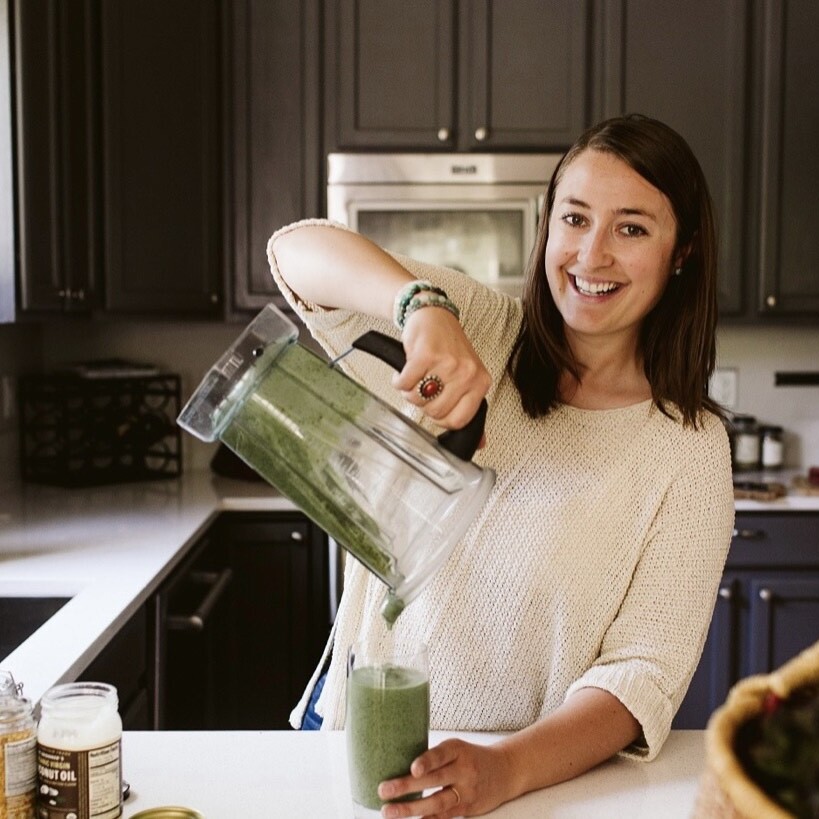
Background:
- Holistic nutritionist
- Specialist in prenatal nutrition
- Business owner of Live Wild Be Well
- Mother
- Yoga Instructor
Connect With Katie:
Instagram: @livewildbewell
Website: www.livewildbewell.com
Check Out Some of Our Other Blog Posts and Podcast Episodes
Anthony Gurule 00:09
Welcome back to Live LOUDLife Podcast. Nichelle is cohosting with me today, which is great because I normally do these solos and it gets very boring just talking about myself. But we have a good friend Katie Braswell, here talking with us. And it’s going to be prenatal nutrition, specialty and all that stuff. So I will let you introduce yourself. spill all the credentials, everything you want. And in any social places where people can find you, websites, etc.
Katie Braswell 00:47
hello, thank you for having me. two of my favorite people, and chiropractors, and people I lean on for a lot of advice and insight here and there. But I’m Katie Braswell. I’m a holistic nutritionist by trade. So I got my master’s roughly like two and a half years ago in functional and holistic nutrition. And I’m board certified through the NAMP. So I work closely with clients. Now I see them one on one in group settings, also in group coaching platforms as well. Prior to working in the nutrition space, I actually worked in the sales field for natural food products. So I sold brands like Rebel, Justin’s, Kind Bar, and just kind of learned a lot about our food sourcing, where our food comes from USDA, FDA practices, everything that really embodies foods. So I really became passionate about nutrition at that point, and also just passionate about sustainability practices, regenerative agriculture, and just really knowing where our food comes from, and the corruption that’s really on the back end of our FDA USDA model. So my mom is a holistic nutritionist as well. so it kind of led me to this field and I’ve just become really passionate about working with women, specifically, my focus in school and in my clinical practice was predominately on gut health, which was a good place to start because gut health does lead to a lot of things, whether that’s infertility, you know, in women, postmenopausal issues, gut health, and you know, babies and moms, and the whole gambit autoimmune conditions as well. So with all of that it kind of led me into kind of my practice and seeing clients one on one, but then after the birth of our son, I really got excited about prenatal and postpartum care, really have to just experience that myself, we had a miscarriage, it took us a little bit longer to conceive. And just, I really felt like there was a true need for more information like this out there. So that kind of led me to this. And so now, it was funny, because when I was pregnant with my son, I saw Nichelle and we were kind of dreaming up this business at the time, I was knee deep and as a sales rep and an industry that I loved, but I traveled a lot and it just didn’t feel right long term. And so I attribute a lot of my success to this one right here. But as far as you know, I practice now like I mentioned, I see clients one on one. Also I have group coaching programs, and then I have a good blog, too that has a lot of info so you can find me at www.livewildbewell.com or on social media @livewildbewell. So it’s a good place to find it.
Nichelle Gurule 03:03
Definitely follow that because it’s a really great, it’s awesome information and share it with anybody who knows pregnant and postpartum all this stuff.
Katie Braswell 03:12
Thank you.
Anthony Gurule 03:12
And now you guys are gonna be doing some projects in the future, which we won’t get into right now. But that being said, one of the main things that we asked our pregnant patients, which you obviously helped me with. Supplements, right. So obviously we’re talking about trying to eat whole foods. Balanced diet. But when you’re pregnant, adding supplementation, is necessary. Needed. So what’s your take? We don’t have to get into like the full list of it. But what are the main things they need to know about need to look for?
Katie Braswell 03:46
Right? Well, and it’s a really interesting topic because and I would imagine a lot of people that are on social media and are looking around are pregnant, are looking for advice on supplements. There are some polarizing topics right now on supplementation in pregnancy. And I’m definitely a Whole Foods practitioner, I’m always gonna lean into foods more than supplements, because our bodies can only break down so much. And we do a lot better with bioavailable forms, and we do synthetic. So I have a lot recently, I think there’s a lot more happening in this there’s a lot of discussion around prenatal vitamins and like, is a prenatal multivitamin really necessary? If someone has a really diverse diet? Are they getting in the right you know, essential nutrients do we even need that? And it really begs the question because, you know, there’s certain clients I have that will bring that up and it’s just like a flat No, they’re just not really getting enough bioavailable nutrients. You know, it has to be someone that has a diet rich and like vitamin A retinol, they’re getting in a lot of iron, you know, choline, calcium, all the things. and with that comes a lot of like organ meat consumption because, like beef liver is like nature’s multivitamin. So someone that’s eating a lot of beef liver, which isn’t the most palatable or delicious thing out there. So not everyone is gonna want that. But that’s usually something you know that a lot of eggs, you know, and someone that’s really, I would say, maybe on the gluten free side as well, like, you know, Eating some raw dairy or grass fed dairy, you know, getting in a lot of nutrients like that, and wild caught fish sardines, kind of eating like our ancestors in a lot of ways, like we talked about, like our grandparents. So that’s kind of one side. And I bring that up, because I’m getting a lot more inquiries about that. There’s a couple of influencers, I think, on the social media side that are pushing that pretty heavily, because we’re just seeing that women like the rates of anemia up and like, it’s like, why is that? You know, and I have so many clients that come to me, and they’re like, “I’m on this iron supplement, and it’s not doing anything.” So then we look at like a hair tissue mineral analysis and see their copper levels are really low. So they’re not really absorbing iron appropriately. So they could be supplemented with all iron in the world, and never see their iron increase on paper. So it is pretty interesting when you start looking at from that perspective, but if a general client comes to me, and it’s just looking at supplements, you know, and they have, you know, a typical diet, they eat fairly well, you know, but they kind of want to stay on the prenatal routine, a prenatal is definitely essential. And that would be most of what I recommend to clients. it’s really important to find a prenatal that does have a methylated folate, because not to go down a rabbit hole, but there’s a lot of genetic variants that are population, like over 60% of the population has one strain of MTHFR, which affects how they’re going to process folic acid, how they’re really going to work through those nutrients. So we need to have a methylated form. I have clients who are like, well, do I need to be tested for MTHFR? Before I take this, you know, folate, or folic acid? And the reality of it is it’s better to take the folate, it’s more absorbable.
Nichelle Gurule 06:30
Assume you are and go that route.
Anthony Gurule 06:34
can you explain a little bit more what that is for? Because people I’ve had people say, “I’ve heard about this, I don’t know what that even means.”
Katie Braswell 06:41
Yeah, so MTHFR. So it’s basically a genetic variant. And it reflects how we process methylated vitamins and B in B vitamins specifically. So you have to have a methylated form so your body can actually adapt it and use it appropriately. If you like, let’s say I do have MTHFR. And I have a single strain. It’s like a $200 test. So like Nichelle saying, it’s better to just assume for a lot of people because it’s not going to hurt you. So with that, it’s all about the absorption and making sure that you can actually process it appropriately. Like if I was to take folic acid, it wouldn’t, I wouldn’t be able to adapt it because my body can’t process a non methylated form of folate or folic acid. So that’s kind of a breakdown, we have to look at B vitamins too, though, because B vitamins are also a piece of the puzzle as well. And we do see that sometimes like, you know, with clients that I work with, occasionally we’ll see maybe an overload of B vitamin intake. So I do look at labs a lot of times in conjunction with an MTHFR diagnosis just to see like, Okay, is there something else going on here? Do they have an overload of B vitamins is their body may be able to process them a little better than we thought. So it’s all kind of a big piece of the puzzle like with and that’s kind of the issue with a general prenatal is it’s not always it’s not just like a one size fits all for everyone, which makes it a little challenging.
Nichelle Gurule 07:51
Now so question I have for you is because so many people don’t eat well. They think they well too. So you know, it’s actually looking at what are you actually eating because people think they a lot better than they do until they read it on paper and they’re like, Oh crap, I’m really not eating that well. Plus adding in so most people don’t eat well in America, right adding in that when you’re pregnant. There’s things that you do not want to eat so I can make myself suffer through things I don’t like in the taste of right now and maybe give me the heebie jeebies. Just think about eating. I can make myself do it. When it comes down to it swallowing a really good supplement that maybe it’s eight capsules a day. Or swallowing liver, eating sardines is just not going to happen but eat pretty well in general. But it’d be like, I could do desiccated liver capsules, which is not going to be good as raw liver that’s been frozen and micros. But like, how do you bounce it out with somebody who’s like, “that looks great on paper, I get it.” But like swallowing the needed brand or a couple other brands that are more capsules..Like where’s that in between for those people who like they want to do well, right? Because you’re gonna have more of the population that is like actively seeking. Yeah, I want to do better with nutrition, right? And they’re naturally going to be more open to like, alright, I’ll take the liver. Sardines, I’ll do it right. But when you’re looking at kind of more of that average population, how do you how would you handle that?
Katie Braswell 09:10
that’s a good question. And the first trimester speaks to that in a lot of ways like I have some clients do beautifully after 18 weeks, you know, they can eat a really nutrient dense diet but up until then, it’s like we need that insurance policy of having the prenatal available. You know, so I just work with a client where they’re at. I mean, if it’s someone and I am pretty transparent like you know me anyway, I’m pretty much like just shoot it straight. Like if you’re gonna be able to do this let’s put you on this plan but if not, this is the route we’re gonna go. The neat thing is there’s a lot of really great brands with prenatals like I love seeking health Dr. Ben Lynch because he kind of prioritizes genetic variants and like MTHFR and in his formulations and a lot with like histamine like a lot of women really have a hard time processing histamine and then having histamine intolerance and so he works a lot with things like that, like needed is a good option as well but so you know, we’ll kind of work with like, I have one client like seeking health it’s eight capsules like use Just as needed, she just couldn’t do it. So fortunately Seeking Health has a chewable, that’s a two tablet deal that they can just pop and be done, you know, so I kind of just have to work and see where the client is capable of. On the flip side, I do have a lot of clients that come to me with good intentions, and then it just never comes to fruition. So then we just have to kind of back up and say, you know, and the neat thing is, we can certainly pull together like, I don’t rely on just the prenatal and in fact, I don’t really recommend that someone just takes a prenatal and that’s it. Because we need so much more. I mean, you know, DHA, you know, having a great source that have omegas that are triple tested for purity and non and toxic materials. So like, you know, I love Nordic Naturals and Rositas, you know, to have a really nice pure brand and pure blend. Magnesium is a really underrated you know, nutrient really for looking at like mineral status in pregnancy. I think you know, per like the birth center boulder or bch, they say no more than 400 milligrams of magnesium in pregnancy. But magnesium has such a broad spectrum, there’s so many different forms of magnesium that can be utilized. But oftentimes I have a client who comes in, they’re like, Oh, I was given magnesium citrate, and I’m like, well, citrate is more for like constipation, so it’s not really gonna help you that much in pregnancy with your aches and pains and sleep and joint disruption. And so it is really important to find those other things. And I guess kind of diving into the gambit, you know, those would be things I would definitely recommend. Vitamin D is something that’s also it’s becoming a little bit more controversial, I think, because it’s been over supplemented for so long. And there’s just there’s some more research coming out. PubMed just released a couple of neat articles about it. Because a lot of people are able to synthesize and absorb vitamin D properly from the sun and a lot of foods. But we’ve kind of been told for X amount of time to keep supplementing, but we’re finding that a lot of women specifically have enough vitamin D, and sometimes they’re over supplemented. So that’s one thing as a practitioner, I’ve kind of backed up from saying, just like everyone should take 5000 IUs. instead, I’m looking closer at labs first and saying, okay, you know, what you have, like, your levels are at 70. Like you’re good. from a functional perspective, we’d like to see 60 to 80. If someone’s able to do that on our own without supplementation, I’m not going to add any more in. so that’s just one thing I’ve kind of seen. There’s some conflicting advice right now and kind of research on vitamin D and too much that it could cause some like calcification of the bones long term and things like that. But I don’t know, I don’t think there’s enough research yet on that to really say one way or the other. So vitamin D is one that can also help with a lot of infertility. We look at vitamin D pretty closely. And then other supplement wise, what am I missing? And then some things that all add in like beef liver, like you talked about, if it’s a client that maybe isn’t able to get a lot of B vitamins, beef liver’s incredible because it has full weight, selenium, B vitamins, iron, and just a lot that we can’t just get from like an average diet and it’s also bioavailable, because it’s 100% Food base, so it’s not a synthetic form. And vitamin A that leads to a whole other discussion about beef liver, but and I could talk about beef liver for days, anyone that follows me I’m like, Oh, here she goes again. But beef liver like vitamin A, Well, I think we were talking about this actually the other day. But, you know, there’s been a lot of conversation about too much vitamin A in pregnancy. And a lot of women are scared now to eat beef liver, because they’re like, Oh, well, we were told from our practitioner or OB that we shouldn’t have beef liver because it’s high in vitamin A, which it is that’s not wrong. But in order to exceed the RDI for your vitamin A and take that day in in conjunction with your prenatal, you’d have to eat like two whole, you know, cow beef livers. I mean, it’s like it the the amount of the quantity and this is just far beyond what anyone would ever intake. So I do like to layer in beef liver, if I can, whether that’s a client that’s able to take it in from a food source, like, you know, raw or, you know, maybe not raw in pregnancy, depending on your comfort level. Or if you want to cook it, or saute it or have it some people will just even like grind it up and put it in like a smoothie.
Nichelle Gurule 13:51
Does the nutrient value change when it is cooked versus raw? has there been studies as to how much that changes?
Katie Braswell 13:59
Yeah, you know, so Paul Saladino we were talking when I first got here you know, he did the heart and soil supplements and he talks a lot about the dehydrated liver and kind of the change. I don’t think it’s insane I think they say it lessens by like 10 to 15% of what it actually would be but it’s the same thing if you were to like freeze beef liver technically and then like we talked about like pre-thaw you’re losing some nutrients anyway. So I say you know for me personally like we were just talking about and I have some clients that are perfectly capable and and are comfortable eating raw beef liver and pregnancy they freeze it and then just swallow you know, chunks here and there which, you know, kind of depends obviously, there is a risk for parasites and things of that nature in pregnancy but that is probably your best way to get it in. I mean because it is so nutrient dense in its raw pure state. But there’s a lot of great companies now like Heart and Soil, Ancestral supplements is really great, perfect supplements, Smidge they have some really nice beef liver products that are that are pretty good.
Nichelle Gurule 14:59
if you’re gonna do it right It is better to freeze a freeze that we know from experiencing. We won’t get into right now,
Anthony Gurule 15:06
I ate raw liver…it didn’t go well.
Nichelle Gurule 15:08
It was not frozen for weeks at a time. So reach out to Katie, if you decide to go that route, don’t just dive right into chopping it up.
Anthony Gurule 15:19
I was very ambitious because I knew all the benefits of liver and this was straight from the farm that like just packaged I was like, I mean, it’s fresh, right?
Nichelle Gurule 15:33
I have a question for you? Because, you know, most people are going to most people are going to have a midwife or an OB. And they don’t have very much nutrition experience really at all, they just say take a prenatal and then the prenatal what are commonly recommended are really just be better if they didn’t take them. Like when I look at them, I’m like ooof. Especially because they’re just not taking into account the genetic variations that can affect even vitamin A and not being able to convert yet a carotene which is the plant version of vitamin A. So we’re looking at most people that are pregnant, or not going to go the extra step and see somebody like yourself, right? Nor is there enough nutritionists right now that exist to do that to break down and get all the labs and go through hair samples and all the things. Even if that sounds great that that would happen. It’s just not going to unite anytime soon. So with that being said, like what do you wish you could give as information to people who are not going to see a nutritionist like yourself, whose OB and midwife are not giving that information? Maybe their insurance won’t cover an extra vitamin D test. It’s not going to cover checking their Bs, right? Like, what information would you love to get that person who’s like, listen, I just don’t have the resources for that. What should I do? Could could they be honest, specific supplements? Would you recommend like this supplement DHA and this? Yeah, they’re like, “I don’t live anywhere near I can get a fresh liver” what should they do?
Katie Braswell 16:51
That’s a good question. Because that is a general, you know, portion of the population. First of all, having kids is expensive. So it’s hard to invest when you know, you’re gonna have medical bills coming out, Or if it’s someone who knows they’re gonna have a C section and maybe, you know, is kind of preparing for that it is expensive to seek nutritional advice. And there is a handful of, you know, lucky people out there that, you know, see a practitioner that is really mindful and does talk about nutrition a lot. But yeah, I would say it’s kind of like a general idea. I mean, first of all, there’s some great books, like we’ve talked about, like Lily Nichols wrote a really nice book, nutrition for pregnancy, which is a beautiful resource. And I just love that it’s in the hands of so many people now. So that can be really great. And she gives a lot of good options for people that may live in a rural setting and may not have access to you know, every you know, Vitamin Cottage or Natural Grocers right down the road. Outside of that, you know, the general kind of idea that I tell everyone is, yes, find a really great preprenatal and like we talked about, you know, falling into that methylated folate, because if you don’t have the option to get supplemented, definitely, you know, try to go that route. So something like Seeking Health, Needed. There’s another one that I really love that just kind of came on the market that’s really good. Yes! Full Well. I just got samples of it. So I haven’t taken it, but I like the whole like composition of it. So that’s a good option too. So I would always say finding a good prenatal and then working with your practitioner on that. Another thing that’s kind of underrated are probiotics. I think a lot of times, that’s something that should be talked about a lot more because we’re seeing a lot in clinical trials of the importance of having probiotics for mom both in the preconception period through pregnancy, and it helping actually, with like GERD, acid reflux, you know, things kind of complicating the baby in you know, the first few weeks. so it is really helpful to kind of foster a strong microbiome for the mom to then pass it on to baby. Also, with Group B strep, it’s important to stay on a probiotic. So a couple of brands of that, that I really like is just Thrive and Seed. There’s also a megaspore biotic, that’s pretty, pretty digestible, as well. So things like that, that would definitely important. And then really, the fish oil, definitely magnesium, and then vitamin D, you know, and I always kind of tell my clients that don’t have the resources to test because testing isn’t cheap. And oftentimes, it’s not covered by insurance. It’s, you know, be be a proponent of intentional intuitive eating, and really listen to your body, you know, what does your body want, I mean, if we really back up and kind of look, you know, 3040 years ago without social media without you know, technology all the time without the TV on, I think we paid more attention to what we actually wanted. And sometimes when you sit with that, you know, I’ve noticed even on backpacking trips, unfortunately, usually what I want isn’t there, but I usually this is what my body needs, you know, and like so I think when we kind of stopped the noise we really can pay attention to what our bodies are telling us. So I’m really a proponent of that is like having people really step back in pregnancy and in preconception and say, you know, your body’s generally going to tell you like, are you feeling like some someone were just like, I crave a burger like every week and pregnancy I’m like, Okay, well, let’s, you know, let’s think about Yeah, it’s your blood volume, you know, you probably need more iron, you know, those things. So, that’s always what I would say and vitamin D is pretty polarizing. You know, a lot of times with vitamin D, we’ll see like, seasonal disorder, you know, people seemed to have a little bit more irritation around like time change and the light changing and then things like that sleep can also be affected, you know, mood swings, mood disorders, you know. So those are kind of things to kind of pay attention to. A fatigue. I mean, that’s one thing in pregnancy, you know, you, you are going to be tired. But extreme fatigue is something that I think if a lot of us paid more attention, you know, we could probably kind of fix that with some food groups and time outside too.
Nichelle Gurule 18:01
Is it Full Well? So if I’m craving a beach vacation, does that mean any vitamin D?
Anthony Gurule 20:32
mineral you see that?
Katie Braswell 20:37
She can do it right outside, no problem. Colorado sun, little wind.
Anthony Gurule 20:41
So one thing I’ve seen on a few labels of checking, which and you can weigh in on this, or I guess, just affirm what I’ve seen is supplement companies are now knowing that we need folates. Yeah. And are you seeing that sub text that says, XML from folic acid?
Katie Braswell 21:01
Yep, that’s definitely something you’re seeing more and more, because there is a lot more discussion on it. It’s interesting, though, because I had a friend that put this whole thing on Instagram, she made a real about folic acid, and folate and kind of everything we talked about. she was working with a client that had been told to take folic acid. So she kind of went on this rant and did her whole spiel about it. And there was so much pushback, and it actually went viral, because this was like this whole debate. And it’s it really amazed me because I think in my small circle, I feel like the it’s out, like the word’s out, you know? Like, it’s like methylated folate or like, That’s it, you know. but I realized after seeing her thing, first of all, how many practitioners are very passionate still about folic acid and are not seeing the research or they just maybe have done their own research. And it’s limited and they still feel like folic acid, is it? So I think yeah, it’s it’s really interesting to see how many people still, like I have clients still to come to me and say, “Oh, I’m on folic acid.”
Nichelle Gurule 21:57
but I mean, it does take an average of, what does the study say, of 17 years before research goes into practice? So I have a close family member who I got an argument with this exact topic about. And I felt very confident like the first topic I was like, I own this one, I know it, and we chatted about it, when it came down to was that practitioners are going based off of the research, right? The research commonly uses that they’re looking at folic acid. Why? Because it did show to decrease neural tube defects, right. But now you’re looking at well, why did they use folic acid and not folate? Did they just not know? Or was it just cheaper when you’re doing studies that are having 10, 20,000 People? And the answer is that folic acid is synthetic, and it’s super cheap. Yeah. Compared to it is MTHF. So, you know, it comes down to that. And so she’s like, “but it makes you it does reduce neural tube defects.” I go, “Sure, But could it make things better? And is it doing other things to that body? If they’re not having the MTHF?” And she’s like, “well, I don’t know.”
Katie Braswell 22:52
Yeah, there’s a couple brands who are doing like methal-free forms, too. I guess if someone is having like a, you know, maybe an abundance of, you know, absorption or something’s going on that we need to kind of look at. But yeah, that’s interesting.
Anthony Gurule 23:04
And I think this really just comes down to, because I had a very, very short, not wasting my time, internet debate with a pediatrician about milestones about crawling. Right. So it’s the same thing. I think it just really, I think the differentiation is, we just have a different opinion as to what may be healthy or optimal actually is, right? Where we see one side of the spectrum is very much about well, we’re gonna play the conservative role. And we take this because we don’t want certain things to happen. Right. Defense mode, right? Well, we’re thinking more offense mode, right. We want this to, like flourish and thrive as best as possible. So what’s gonna be the best option?
Katie Braswell 23:44
Yeah, exactly. Yeah, it’s interesting, I think, coming from an integrative perspective. I mean, I think we’re all kind of immersed in the research, you know, even something as simple as like, red raspberry leaf tea is something like I did a post on that today. And so many people are just so scared, you know, they’ve been told, if I take this before, 38 weeks, like, you know, I could, you know, have uterine contractions and baby could come and it’s like, you know, what, I really want to sit with people that are having that fear, and, you know, totally understand where that comes from, but at the same time, I do think we have to get back to this point of being fairly intuitive and, you know, trusting our bodies and knowing that these resources have been around for a long time. And you know, how do we utilize that. and you know, with new research always comes changes, but it is interesting, the folic acid thing is, it’s yeah, it’s definitely controversial, I would say, to say the least.
Anthony Gurule 24:31
So outside of folic acid and the supplements. So we’re talking about whole foods, liver being big. What are some of the other just general recommendations? So I guess one of the things would be, I mean, I think the hard part for some people is when you’re looking at supplements, one of the big worries is, am I absorbing it, first and foremost. That definitely helps. But when you’re talking about all the different symptoms for pregnancy with energy levels, so on and so forth, rather than go going down the rabbit hole of assuming that this will fix everything what are some of the other big either nutritional things or just general suggestions for pregnancy do you give?
Katie Braswell 25:09
So the first thing you know I always say is, first of all, we need to spend time outside. I’ll just kind of start with a lifestyle thing so you know to start. because I think sometimes in pregnancy you know, and I was guilty of this like up until 20 weeks I didn’t feel that great. So I really didn’t like leave the house much. I was pretty much you know, definitely dealing with some nausea and things and some of that’s genetic and there I have my own suspicions that I was low on popper and you know, maybe that was why I had those things and B6 but you know, I think first and foremost, it’s really helpful to get outside get natural sunlight every day…that’s really impactful. Next to that is you know, like we mentioned with food, you know, making sure you’re eating these forms of foods that are bioavailable, you know, I always kind of go back to my days is in the natural food space is like when you’re shopping always shopping like the external you know, the square of the grocery store so trying to avoid the internal aisles because you’re going to be getting those real whole foods You know. we start looking at a lot of processed foods in pregnancy you know, not to go down a rabbit hole of poo fuzz you know, seed oils, polyunsaturated fats, that can be hard on the body so you know when you’re eating things that we want to make sure they’re full fat, they’re good oil, so coconut oil, avocado oil, beef tallow, gee–things like that are really nourishing and nutritive. You know, as far as meats go, I mean obviously I’ve worked with a lot of vegans and vegetarians in the past I would say I definitely lean in more to the that’s just more my niche is I’m really a big proponent of kind of this you know, well rounded eating patterns and eating you know, meat sources. but you know if it is a vegetarian like leaning in, I just had a client you know that just had her little one and she had a beautiful pregnancy you know, 100% vegan and did just a great job, you know, really like landed it she just ate super well, did a great job. And we really relied a lot on nuts, like that was like her big source of omegas and you know, I guess the good polyunsaturated fats. and then also making sure she had plenty of good fat options in her system, she was getting a lot of protein. So it kind of depends. depending on the client. meat products, obviously beef liver we talked about. bone in meats are amazing, because bone and meats tend to when they’re stewed are cooked together they leach more vitamins and minerals into the meat product rather than something that’s not you know bone-in. so you know looking for like bone-in chicken thighs or short ribs and things like that. And then fish products– wild caught fish–so that’s a big topic too, just making sure you’re not really intaking a lot of fish that’s rich in toxins mercury, all of those things. So I typically recommend smaller fish like sardines are really great. Tuna can be had in moderation but really it’s pretty high in mercury so I would say to avoid that. And then you know obviously the sardines Those are great because they have really small bones so they’re high in calcium. And then salmon is starting to test a little bit higher for toxins. I like arctic char if you can find that wild because it comes from colder waters. cod is really great. And then obviously just getting in a well rounded diet of leafy greens, vegetables, root vegetables are really great and pregnancy. cheeses you know I like to say if you can go raw, you know if you’re comfortable with raw dairy and raw cheese, if you have a local supplier, that’s great and you trust them. if not grass fed is great. And then a eggs. eggs are just like a superfood for pregnancy it’s full of choline, full of omega, full of copper. Copper is a big one. You know, when we look at fertility a lot of times especially really in males, we see instances of low copper and and females too, but it’s really important. There’s not a lot of foods that are rich in copper. eggs are one of them, oysters are another. oysters are great to have too, like a smoked oyster or smoked muscle. You can get those in little, you know, cans, just making sure they’re BPA free and they’re also smoked in olive oil. I could go on about this for days. So those are some of my favorites.
Nichelle Gurule 28:41
Just to add on to this, because you brought up the male side of it. there’s a lot more studies that are coming out about the placental health, the umbilical cord, even mother having nausea versus not that it could actually be coming from the male side of things. So making sure that it’s not just the female that’s putting in the time and energy of course, it’s her body that’s nourishing it wants to conception happens, right? But as everything just starts unfolding, those cells start replicating things happen. What was the 50% coming from? Is it coming from a healthy male and so all the same things you said are still true? For the male, there’s gonna be things that you tweak. So is there anything with conception that you suggest for the male party on top of all you’ve ever said for females.
Katie Braswell 29:20
that’s a great point especially, you know, there’s a lot coming out to about miscarriage rates and really being more male factor than female factor. So a lot of that does come down to copper. That’s the really the biggest thing, so like shellfish is really wonderful like oysters mussels. Co Q 10 is really great. As far as a supplement source, it’s good for our cardiovascular health, but it’s also really great for fertility both in females and men. NAC is a really powerful supplement. it’s anacetylcysteine and it’s a bioflavonoid that can also help with you know, fertility needs. it’s also really great in men but also it helps sperm health and mobility, and also women, it helps kind of boost up ovulation in a way so it’s really helpful with PCOS and things like that. And then my husband always hates this one. Fenugreek is a really interesting herb. And so it can be taken in capsule form. And it helps for mobility. So a lot of times if we have someone that’s going through like an IUI trial or IVF, and they’re having like a sperm mobility issue, this is a really wonderful herb for that. It’s also just great for general male health when you’re coming to fertility and things like that. The only caveat is, I had my husband on it for a while and he was like, You know what, I think I started, I smell like maple. Do you smell it? he’s like, I have this new BO. And it’s like, it’s weird. It almost smells like a pancake.
Nichelle Gurule 30:32
sounds great. Sounds a lot better than other options.
Katie Braswell 30:35
And I was like, Oh, I don’t know what that could be. And then I started researching. And I was like, uh oh, because it does start to kind of leak out of your system. So that’s the only caveat, if you’re gonna have fenugreek, be ready for that. And then beef liver. You know, back to that, I think that’s a really good option. it’s funny, a lot of my clients, I’m like, have your husband eat the same way, like everything we’re kind of putting together is like, but we talked a lot about this. It’s kind of like eating like our grandparents and eating like our ancestors and looking back to like, okay, you know, even like my grandma, I remember she would make like a big chuck roast. And she would like take the fat off the top of the chuck roast when it was done and use that as her like, rendered fat for the week. because they didn’t have a lot of excess resources and money. So she was like, butter is expensive. I’m just gonna use this, like, lard or tallow for the rest of the week. so that would be kind of my recommendations for male and female fertility. One other thing, you know, it’s really important for conception, both for females and males is also blood sugar balance. You know, we’ve talked some about this as looking at, you know, as a society, we’re undernourished, and we’re not eating enough, you’re not taking enough calories, we’re not really paying attention to how we should eat. And it’s really important to really fine tune when you’re eating, you know, I always recommend eating within like 45 minutes to an hour of waking up. And every two to three hours after that, that’s great in pregnancy, it’s great for preconception, great in postpartum. It’s just going to help you kind of balance yourself overall. And that’s something I think, as a society, we just we don’t eat enough. You know, on on average, women are undernourished and not taking in the calories they need.
Nichelle Gurule 32:08
Oh, I wonder why…is there a message that’s been passed around. Special K commercials that go around.
Katie Braswell 32:13
Yeah, I know. It’s like, it’s so sad, you know, because I think it’s just we’ve gotten away from this, like, Okay, we want to feel like nourished and healthy. And, you know, and it’s, when I even I get a lot of comments, like when I do my birth center classes on prenatal nutrition, as because our, you know, caloric intake and our needs, you know, go throughout pregnancy. So you start at, like, 1800, roughly, I mean, that’s on average, first trimester then 2,0000 and then 2200. And a third, and I have so many clients that struggle with that they just have this, you know, these and sadly, these disordered eating patterns that we have to reframe, and kind of work with and a lot of that is just, you know, kind of going through the motions and you know, if it’s trauma based or whatever is going on, but really retraining our minds on like, “Okay, this is good for you, you know, you do need to nourish yourself and there’s this new life coming too.”
Nichelle Gurule 32:14
And that is something that has to be talked about is like your body’s gonna change. I talked about that a lot because I have a lot of very fit women coming in and it’s really disturbing to them that their body’s gonna change and just giving them the confidence that like things will, you’ll get you back, I promise. you’ll get back to your movements. But we see a lot from the movement like in like the bodywork perspective of gripping and holding on to the Abs because what are we taught from a young age like, Paulin, abs and like, you gotta be small. And so then they keep that pattern, right. And then we have positional issues, because baby doesn’t have space, like you should look pregnant when you’re like 35 weeks, if you don’t, you’re holding your abs too much. So it comes down to food and how they’re holding body that comes from just a whole other thing from earlier on for them that we have to focus on.
Katie Braswell 33:32
Yeah, and there was one other thing you know, in that same mindset is like, you know, in the traditional, if we look at just, you know, OBs and what they’re kind of recommending, they’re recommending, usually like 60 grams of protein. And really, we’re finding on average, women need anywhere from 100 to 130 grams of protein a day in pregnancy. So that’s one of the things I want to make sure I hit on because that’s something I drive home with a lot of my clients and we see just lessened, you know, propensity for nausea, you know, any kind of things coming up preterm labor, preeclampsia, when you do have a lot of protein in the system. It does help with your recovery and glycine and collagen repair and all of that, too. So that was one thing I’m wanting to fix.
Anthony Gurule 34:09
I don’t have any other questions. No other questions. Is there anything else you want to add before we wrap up?
Katie Braswell 34:14
No, I think that’s great. Thanks for having me on. This is a dream. I could sit here all day, whether the camera was on or not.
Anthony Gurule 34:22
2.0 coming. Well, thank you so much.
Top 5 Exercises to Relieve Mid Back Pain During Pregnancy
Top 5 Exercises to Relieve Mid Back Pain During Pregnancy
Do you have back pain postpartum? If your answer is yes, you’re not alone.
I’m Dr. Nichelle Gurule with Live Loud Chiropractic and coaching out of Lafayette, Colorado. I have patients asking me all the time how they can relieve their neck and mid back pain that they have after having a baby. We’re going to go over the top five exercises that you can do to help with postpartum mid back pain. A lot of the time it stems from the postpartum habits that create posture that is less than ideal. It is important to recognize we want to work on a mix of spinal mobility, stretching, and strengthening. The top five exercises we’re going to go over to help with postpartum upper back pain are banded As, double chins, thread the needles, thoracic foam rock out, and a pec stretch.
PLAY VIDEO ⬇︎
What Causes Back Pain Postpartum?
You suddenly go from doing whatever you’re doing, to taking care of an infant 24/7, which mostly means holding them, staring lovingly at them, feeding them, whether it’s bottle feeding or breastfeeding), and just holding them while they’re sleeping.
- We’ve created a “new mom posture” that is commonly rounded with your head looking down at your baby. Our neck muscles are struggling. Our mid back muscles are weak and lengthened. Our pecs are tight and shortened. And our mid back is rounded in this flex posture all the time.
- We have a core that is not as strong; it’s weakened as those muscles get lengthened through the course of pregnancy. And some women will have a remaining diastasis (a separation of their abdominal wall) postpartum. Their core is not as strong, especially in the abdominal region. It’s easier just to slouch.
- Fatigue plays a big role. We’re tired! Relaxin is still elevated for up to five months postpartum, and up to a couple months after breastfeeding.
- Hormones cause laxity of the connective tissue.
- We’re not moving as much anymore. So we are slouched, taking care of baby and not getting in that movement because we are trying to allow our bodies to heal.
Top 5 Exercises For Mid Back Pain Postpartum
So a combination of all that leads to posture that’s little less than ideal. What we want to do is stretch out our pecs, because if they’re tight, they’re going to pull us down. We want to strengthen the mid back and neck muscles, gain mobility in the mid back, get into extension and out of flexion. Let’s dive into all of this with our top five postpartum exercises for relieving mid back pain.
1. Banded A’s.
Banded A’s will help strengthen the mid back postpartum. Think about activating your lats and pulling your shoulder blades down and back. Come into an athletic stance, and slow and controlled, bring the band out into an ‘A’ position. I like the pace of five seconds out, five seconds returning. You can wrap the band around a kitchen table leg, a desk leg, or even a banister.
2. Double Chins
Double chin helps strengthen the neck. Interlace your fingers and place them behind your head. Then push your head directly back into your hands. You can do 10 reps where you hold for one to two seconds; or you can just hold for 20 to 30 seconds. You can do it without interlacing your hands, there just won’t be as much of a force to press into. You can press into a headrest in the car, or if you’re feeding your baby and you’re against a wall, you can press your head against the wall. But be aware that it’s not tucking the chin, it’s bringing it directly back.
3. Thread the Needle.
Thread the needle is great for getting the thoracic spine mobility that gets restricted during a lot of those new mom postures that we have with baby. To start, come down on the ground in a table-top pose. Place your hand behind your neck, then drive your elbow up toward the ceiling, then interlace it through. Try to get as much range of motion as you can in this rotation.
4. Thoracic Spine Roll Out
If you have a foam roller, the thoracic foam roll out is great for getting more mobility and extension of the thoracic spine that’s been flexed so much. Start at the bottom of your thoracic spine, which is where your your ribs end. Either cross your arms over your chest, or have them up overhead. Then rock and pivot over without lifting your hips. Then roll it up a little bit and repeat this motion. Once you get up to the top of your back, you can then open up your arms, relax your head, and stretch out your pecs.
5. Couch Stretch
The couch stretch works on an extension of the thoracic spine that’s been in a lot of flexion during the postpartum early days. Open up your arms nice and wide on the couch, and then drop your chest through. You’ll get that extension in the mid back, and the pecs will get stretched stretched at the same time. You can also do a pec stretch in a doorway or against the wall.
Conclusion
So those are the top five exercises that you can start now to help work on that mid back pain that you’re having postpartum. Other than things that you can do at home, I recommend chiropractic care, rehab like some of the movements I just gave you, massage, and acupuncture. And then finally, put heat on the area. Sometimes relaxing those muscles with a hot bath or heating pad can be really helpful to relieving that mid back pain you’re having postpartum.
Keep up the great work and LIVE LOUD!
Share below with a friend or loved one.
Full Body Movements Over Kegels To Target Pelvic Floor
Full Body Movements Over Kegels To Target Pelvic Floor
How can you strengthen the pelvic floor without kegels? People commonly resort to kegels to “stop the flow of urine.” However, that solution really only activates a small part of the pelvic floor, whereas we want the full pelvic bowl to be engaged.
I want you to think a little bit away from the dated mentality of isolation exercises. For example, at the gym when you see things like just quad machine, or the adductors, or just the presses. That’d be only doing calf raises if you want to strengthen your legs. You’d probably end up with really tight calves, but not necessarily strong quads or hamstrings, and then those calves would behave as weak calves. Another example is the bicep. If you rep bicep curls all day, the muscle will get really tight and short. That would not make it very functional because a tight muscle behaves like a weak muscle. It also will fatigue more. Whereas a muscle that does daily lifting and moving will be solid and much more functional.
The same is true for the pelvic floor. Maybe you’re pregnant or postpartum and you were told you need to do kegel exercises to strengthen your pelvic floor. There’s a chance you’ll end up with a pelvic floor that’s hypertonic, meaning it’s essentially too tight. Many women have too tight of a pelvic floor, which causes them to have a pelvic floor that is behaving like a weak pelvic floor. So when they go to do movements such as running, their pelvic floor is fatiguing because it’s been overworked—it’s too tight. We want to reduce that tension. We want to figure out how to relax the pelvic floor, but also get toned to that pelvic floor.
PLAY VIDEO ⬇︎
How to Strengthen the Pelvic floor Without Kegel Exercises
The best way to work toward getting strong, functional pelvic floor muscles is through full body movements. There are many alternatives to kegels. So exercises like squats, deadlifts, rows, and glute bridges. Do movements that activate and challenge the deep core. The pelvic floor is never entirely turned off. It’s a core muscle, so it’s always engaged to some extent, even with just our breath. When you go to sit and stand, your pelvic floor will be engaged whether you’re aware of it or not.
There’s something called the piston breath, where as you inhale, the diaphragm lowers and the pelvic floor is loaded. As you exhale, the diaphragm comes up and the pelvic floor comes up. So in the beginning, as you’re reconnecting, you can do a full body movement and use your breath to your advantage. Think: exhale, then engage on exertion. During the hard part of the movement, exhale, then intentionally engage the pelvic floor.
So for a squat, the easy part is coming down, the exertion part is coming up. Inhale going down, exhale, and engage that pelvic floor. As you engage your pelvic floor, your transverse abdominus will also automatically engage. So if you want, you can think about engaging that deep core together with the pelvic floor, then engaging that transverse. Another fully body movement is the deadlift. The hard part of a deadlift is coming out of the movement. Inhale down, exhale, engage pelvic floor on the rise.
Conclusion
This is what we can do early on for that connection: use the piston breath to our advantage to connect and really engage the deep core system. But long term, we should just be able to use these full body movements in an advantageous way for our deep core. Eventually, we shouldn’t even have to tell it to turn on. Ultimately, full body movements are the best way to really tune in to strengthen the pelvic floor. However, there are always exceptions where kegels can be advantageous to get people to isolate and really focus if they’re having a hard time. But we never want to overdo them because, again, we don’t want to create overly tight muscles that behave as weak muscles.
At the end of the day, don’t think “kegel exercises.” Think “pelvic floor muscle activation,” so that you think of all of those muscles coming in and joining together. When it comes to strengthening the pelvic floor, we really want to incorporate these full body movements.
Keep up the great work and LIVE LOUD!
When & How To Return To Running Postpartum
When & How to Start Running Postpartum
How long after birth can you start running?
What is your postpartum running plan?
What postpartum exercises can you start doing?
We have a problem in our society of women just going off and doing everything right away. They’re cleared at six weeks by their provider, whether it’s an OB or midwife that says, “everything looks healed, you can return to fitness and return to sex.” But as a women’s health therapist, I typically like women to wait 8 to 12 weeks if they have a plan. Just because you hit 8, 9,10,11,12 weeks, it doesn’t mean that you just go off for a three mile run.
The plan is: Have you worked on activating your deep core? Have you worked on pelvic stability? Core stability? Balance? If you have a plan, then starting to run 8 to 12 weeks will be a really great spot for you.
I’m Dr. Nichelle Gurule with Live Loud Chiropractic and coaching in Lafayette, Colorado. I specialize in prenatal, postpartum, and pediatric chiropractic care, along with prenatal and postpartum fitness and rehab. I’m one of many women’s health therapists in the Boulder County region, and while many are chiropractors, like myself, who have an emphasis in rehab, some are pelvic floor physical therapists as well. We all agree that women should wait a little bit longer before they begin to run again. Eight to 12 weeks is a much safer timeline than 6 weeks because we really want to make sure that the body is prepared for such a challenging sport.
PLAY VIDEO
Lots of Healing Is Done Within 6 Weeks, BUT…
Women are too often given the green light, when they really should be given the yellow light. Although a lot of healing has happened by 6 weeks, there’s still a lot more healing to do. In general, the pelvic floor and core needs more strength and endurance—it’s gone through a lot over the course of pregnancy. And a lot over the course of birth—whether it was a belly birth or vaginal birth. Women should be advised to still take it easy for a little bit longer, then gradually and progressively return to running.
The American College of Obstetrics and Gynecology (ACOG) agrees that we need a new paradigm for postpartum care. The first step is agreeance, but now it needs to be implemented. We want more appointments beyond the 6 weeks for check-ins. We want better referrals to women’s health therapists who are going to work on the core, help women return to fitness, and help with any other movements they want to do postpartum.
Running is a tough one, because runners often want to get back to it as soon as they’re able to. It’s very high impact, which means it’s going to put a lot of impact on that pelvic floor and the core in general. It requires a lot of pelvic stability, because it’s technically a single stance. So we need to work on single stance work. It requires a lot of core stability, balance, and endurance of all the core muscles. We want to have optimal posture. If we’re rounded over from feeding and holding our baby and have a curve of our back, it’s going to be difficult to breathe deeply. We want mobility and good posture for our mid back, so we can take a deep breath and get that oxygen so we’re not having cramps or other issues that result from not having good posture while we’re running.
Why Wait Until 8 to 12 Weeks to Run Again?
Why do we need to wait that long? Partially because this is a better healing timeline. You’ve healed so much more when you add another 2 to 6 weeks onto that 6 week clearance. It allows that initial fatigue of early motherhood to lessen—you’re likely a little bit more energized if you wait a little longer. The bleeding should be gone at this point after birth, and the hormones are starting to regulate a little bit more. It also gives you more time to build up that core and pelvic strength, as well as the muscle endurance of the pelvic floor.
What Symptoms Do We Want to Avoid When Starting to Run Again?
- Pressure/bulge/dragging in the vagina prior to or during commencement of running.
- Urinary and/or faecal incontinence prior to or during commencement of running.
- Ongoing or onset of vaginal bleeding, not related to menstrual cycle, during or after attempted low impact or high impact exercise (refer back to care provider).
- Musculoskeletal (MSK) pain e.g. pelvic pain prior to or during commencement of running.
Where Do We Start?
If you’re wanting to run postpartum, I highly recommend finding a women’s health therapist like myself, or a pelvic floor PT, to walk you through the steps so that you can be assessed the right way. There are specific running guidelines outlined in the Return to Running Guidelines:
In order to successfully complete this assessment, the postnatal mother needs to achieve the following without pain, heaviness, dragging or incontinence:
- Walking 30 minutes
- Single leg balance 10 seconds
- Single leg squat 10 repetitions each side
- Jog on the spot 1 minute
- Forward bounds 10 repetitions
- Hop in place 10 repetitions each leg
- Single leg running man
Strength Testing:
In order to ensure key muscle groups are prepared for running, each of the following movements should be performed with the number of repetitions counted to fatigue. Aim for 20 repetitions of each test.
- Single leg calf raise
- Single leg bridge
- Single leg sit to stand
- Side lying abduction
Those are just a few examples of some strength training and some challenges to that pelvic floor to see if you’re ready to start running. Because the body goes through a lot during pregnancy and has so many transitions, a lot happens to the core during birth.
What Do We Work On?
1. Breath
Your breathing will change substantially because the diaphragm gets locked up by the baby is taking up that space. And that diaphragm is fatigued after birth because it’s been worked so much that all the deep breathing that happens during birth. So we want to get that breath pattern back. A nice deep breath, a nice rib cage breath to make sure that you’re getting good oxygen is running.
2. Posture
3. Balance
Can you balance for 10 seconds? How about with your eyes closed? I like adding in the single-leg arc to see how your balance is with this movement. Is your pelvis up really high, or are your feet wobbling a lot, is your knee dipping in, are your toes gripping the ground? We want this balance movement to be nice and easy. And if it’s not, that’s okay, we’re going to work towards it.
4. Core Muscles
We want to be able to connect to our deep core. Can you easily tell your body to turn on your transverse abdominis—the deepest abdominal wall layer. Can you tell your body to activate the pelvic floor? What’s the endurance of that pelvic floor? Can you do 10 quick reps? Can you do 10 reps in a row of 6 to 8 second holds? Can you hold for 60 seconds at a minimal contraction of a 30 50% contraction? We want to rebuild that connection because the core is really paramount to running.
5. Mobility
We want to make sure that that the mid-back and hips are mobile. Try doing cat-cow exercises on the ground.
6. Stability
We really want to work on pelvic stability and strength because it plays a big huge in running. In order to have good stability, we want to strengthen the pelvis. You can take a band and work on lateral walks and squats. Try glute bridges, deadlifts—the list goes on.
7. Impact
There’s a lot of different things you can do to add impact to start preparing that pelvic floor for running, which is impact with every step. Consider trying lateral jumps so the pelvic floor gets used to it. You can start playing around with a few jumps on one leg, or go to a stair and jump off.
Conclusion
Check in with yourself: You got your breath down, you got your posture down, your balance is great, you reconnected to your core, you feel great with core stability, pelvic stability, and impact. Now it’s time to see what’s up for the run. To start, you shouldn’t just go out on a 3 mile run. Ideally, you’ll go out on a run for two minutes, walk for five, run for two, walk for five, etc. Then see, do you have any leaking? Do you have any heaviness or dragging? Any pain? Always check in with those symptoms.
To finalize the return to running postpartum, here are a final few tips: if you’re breastfeeding or producing milk, make sure that you pump before or feed your baby before. Also be sure to find a good bra that will support the new breasts that you have.
So how long after birth until you can run? The best answer is roughly 8 to 12 weeks if you have a good plan, and pay attention to the way you feel.
Keep up the great work and Live LOUD!


